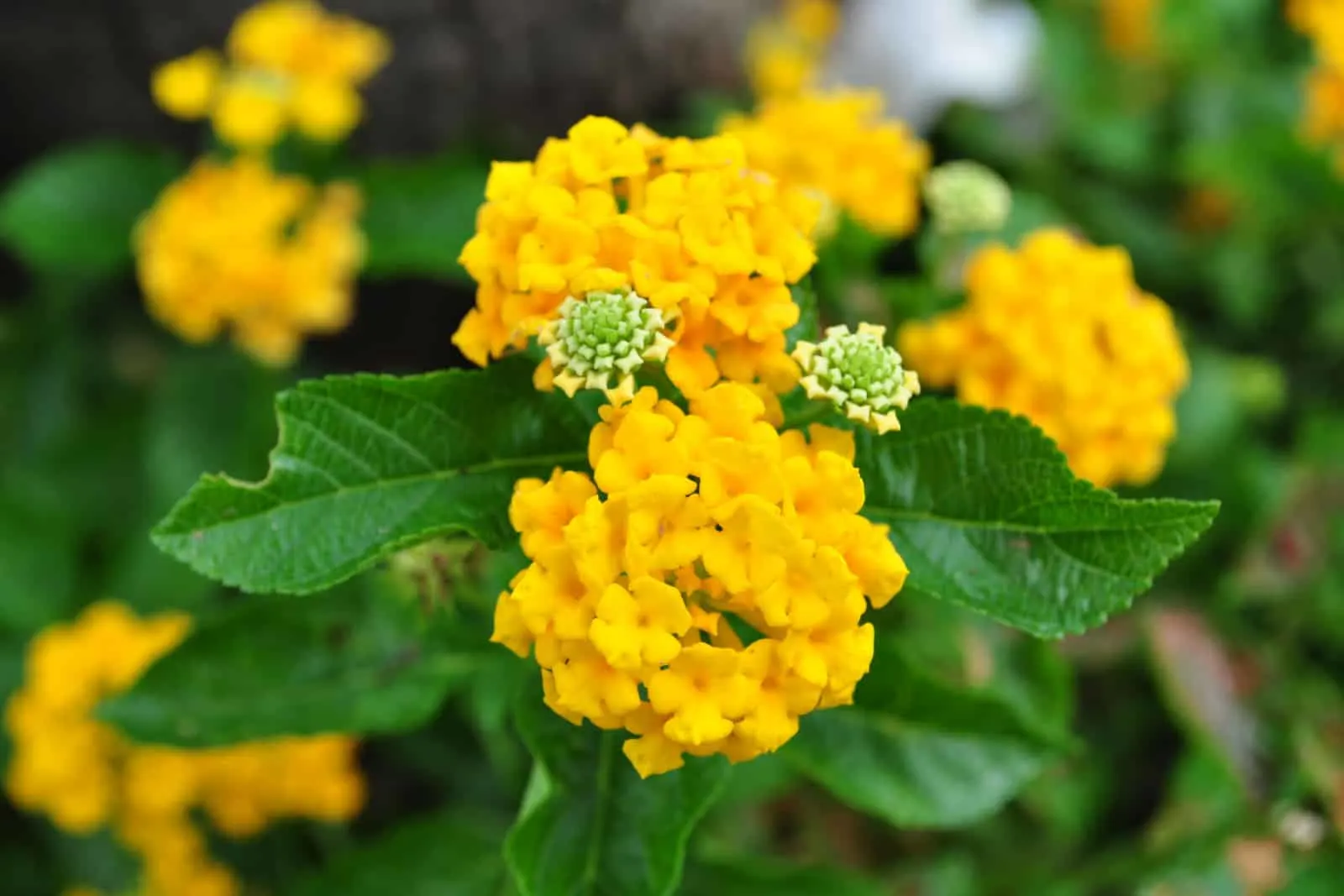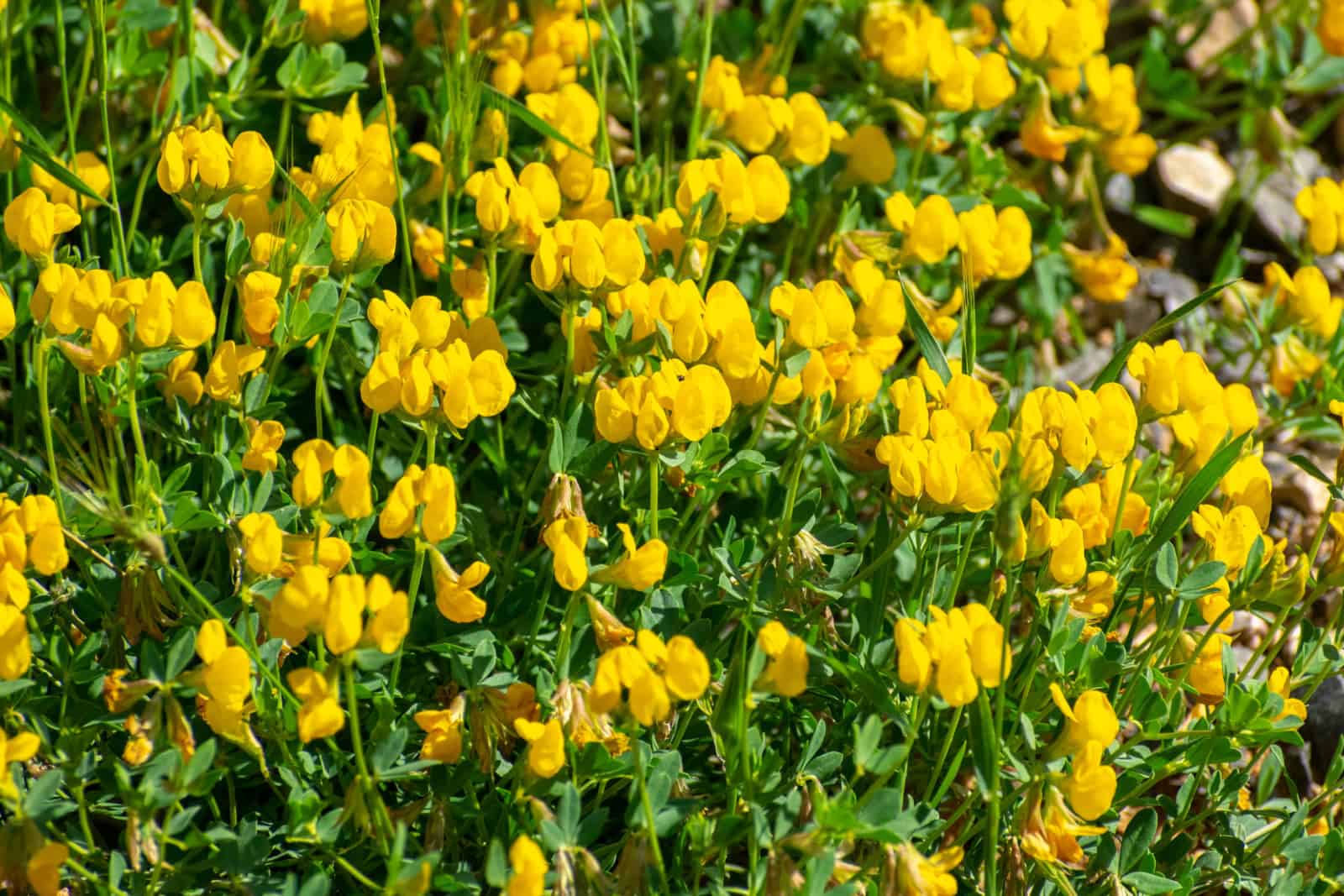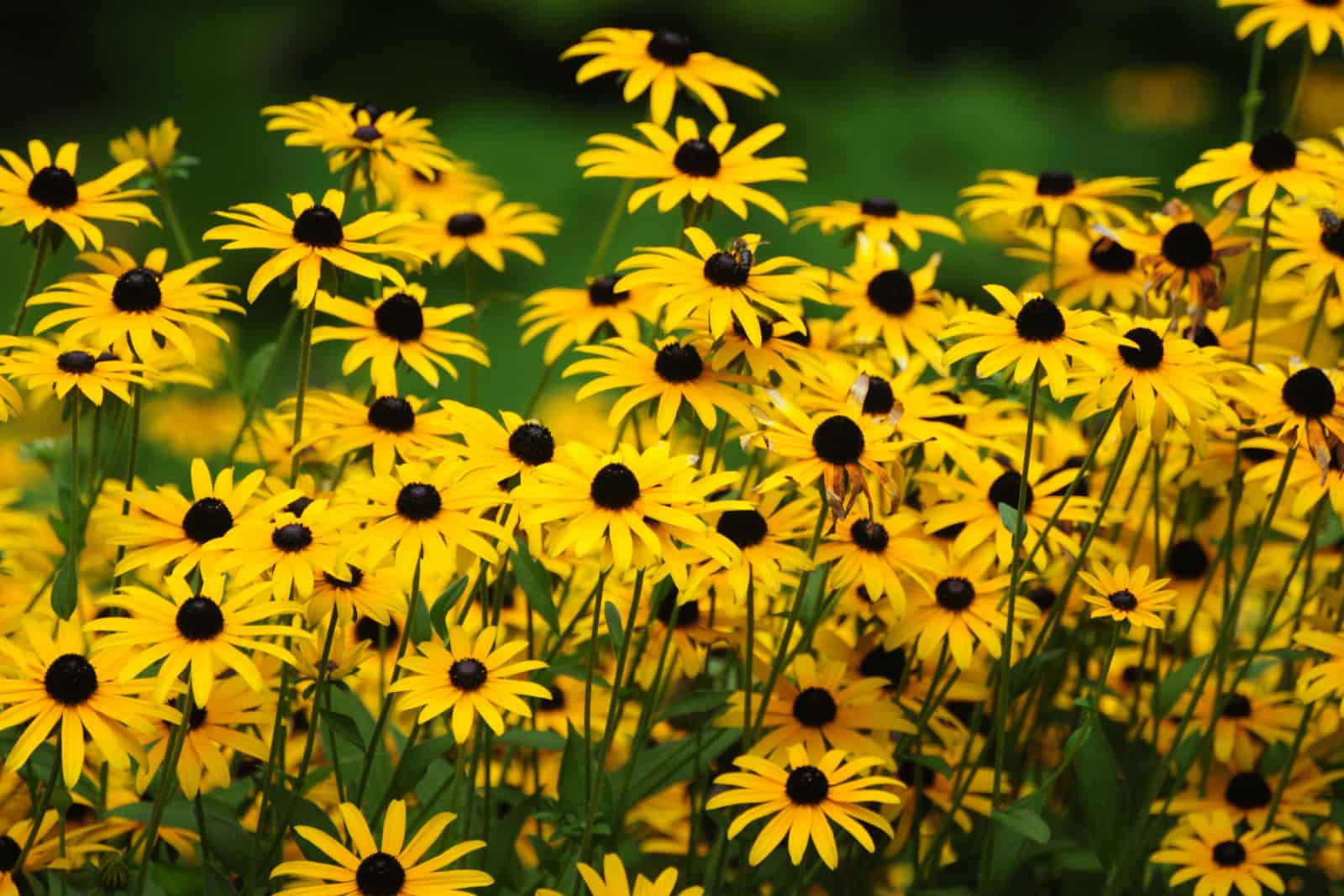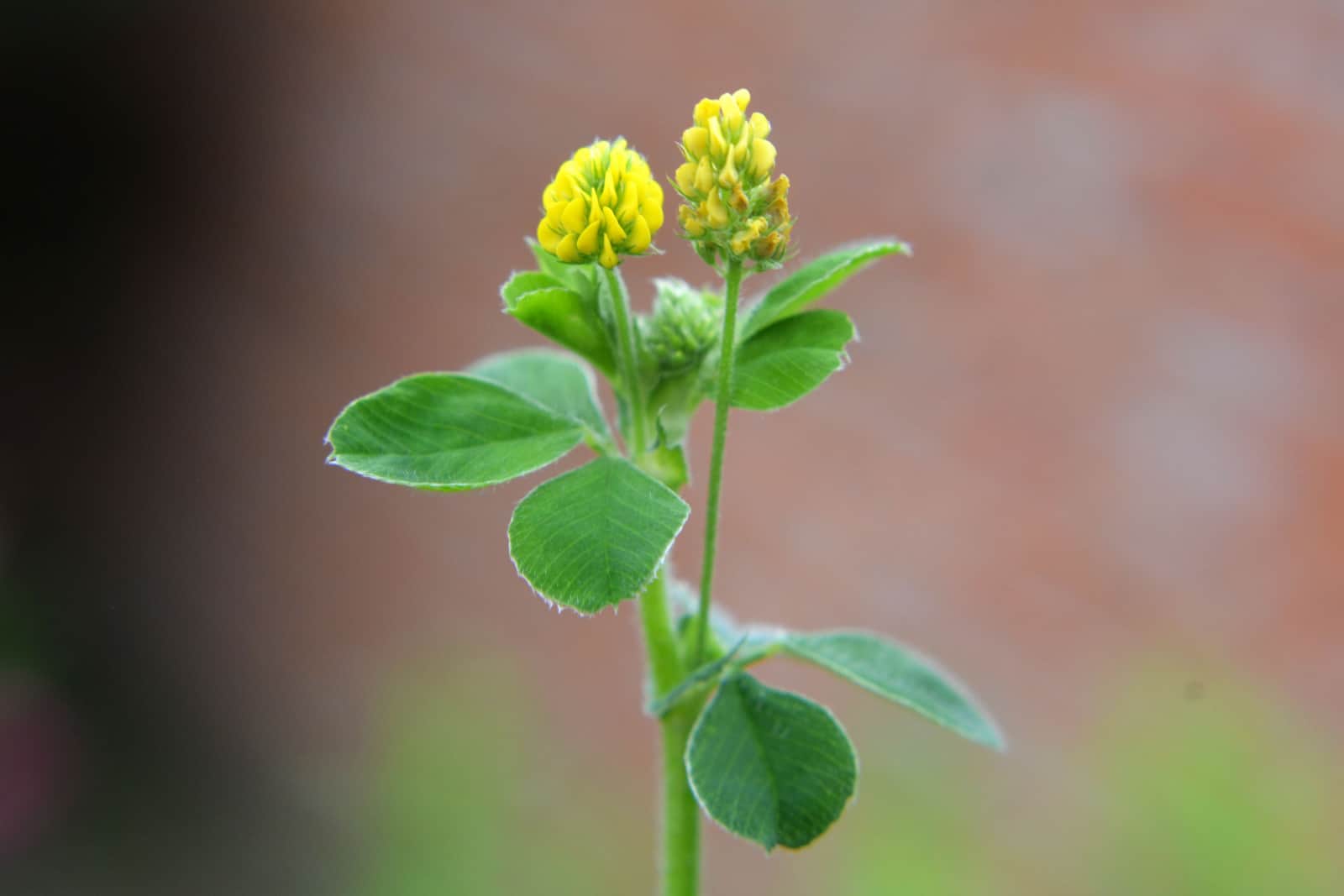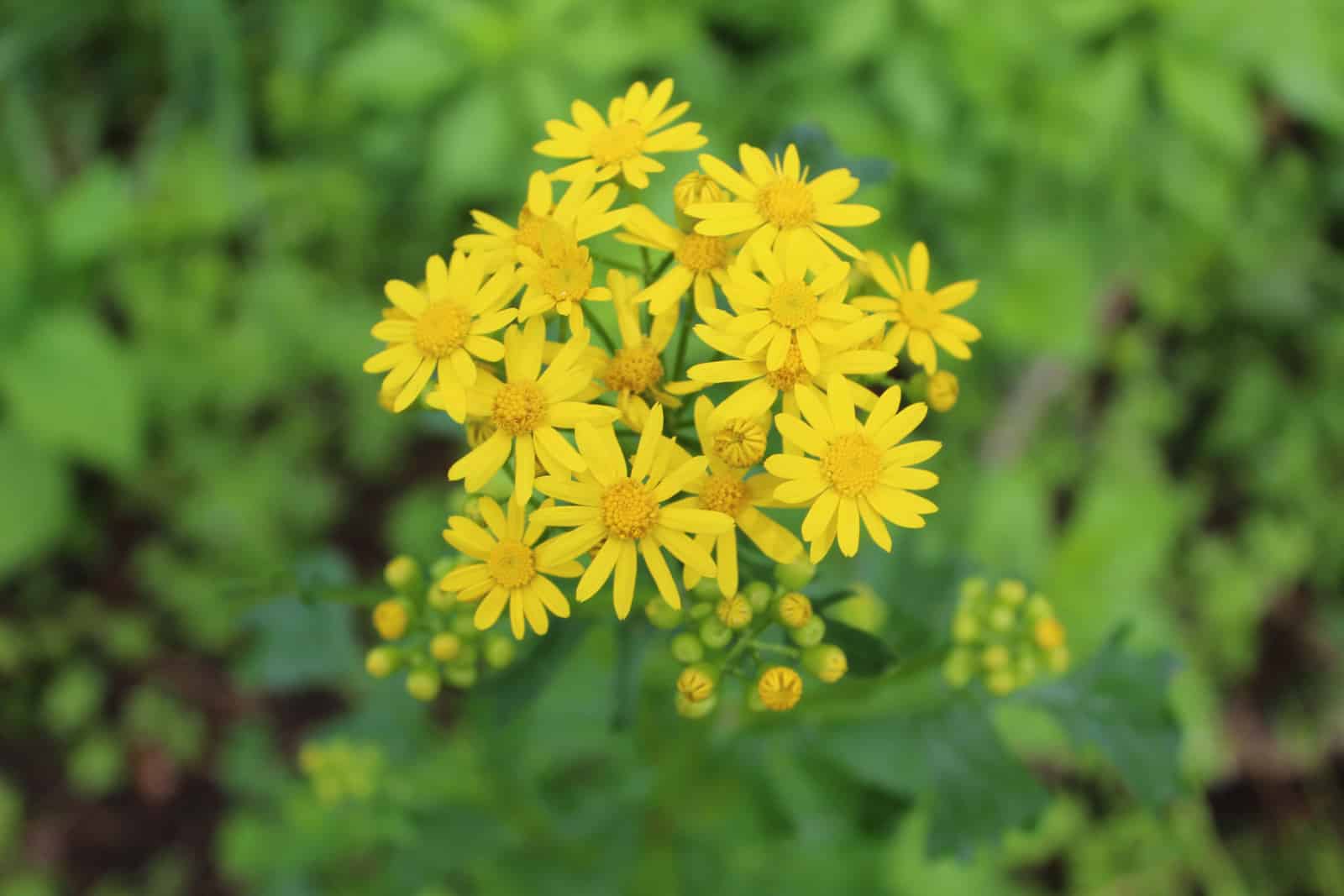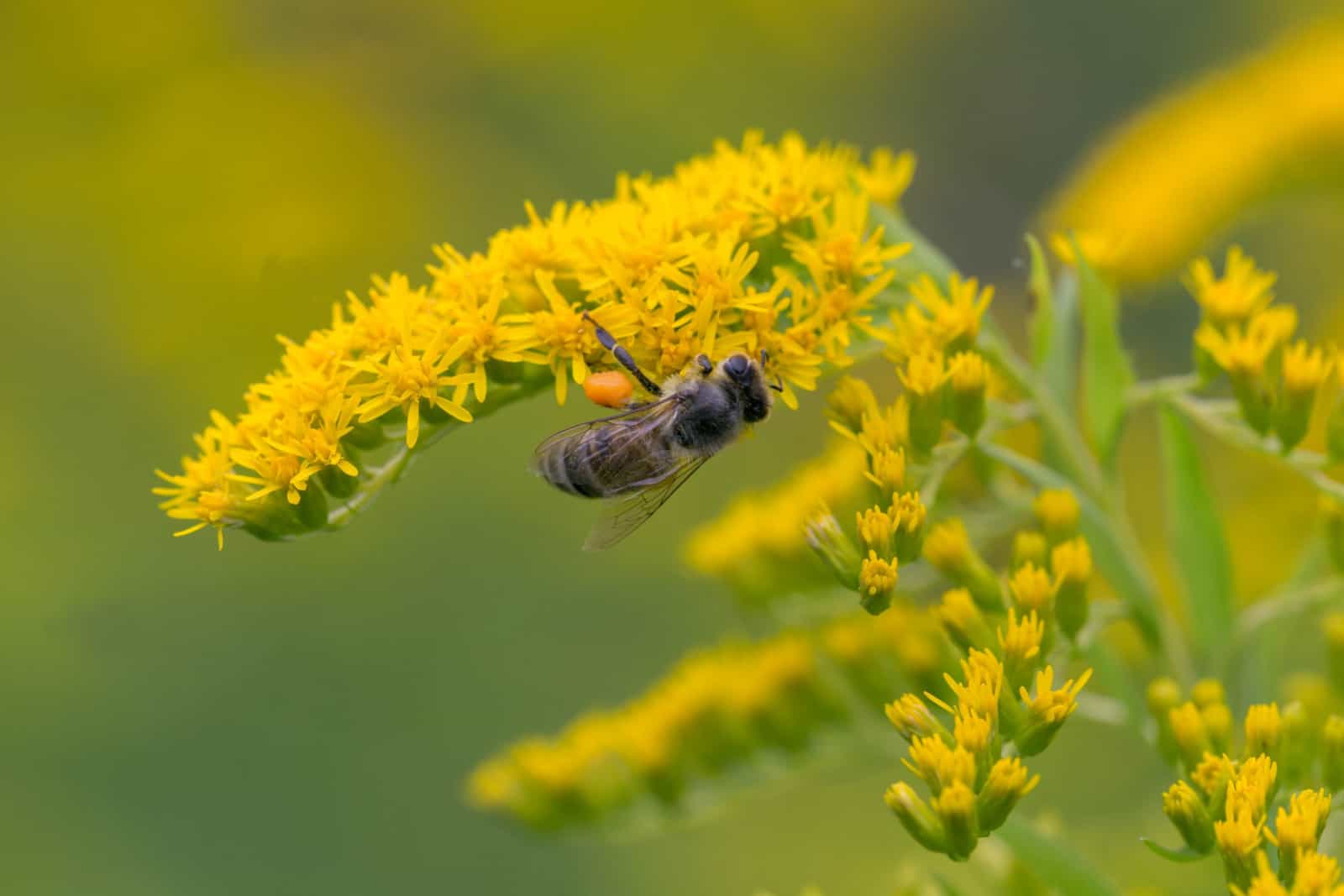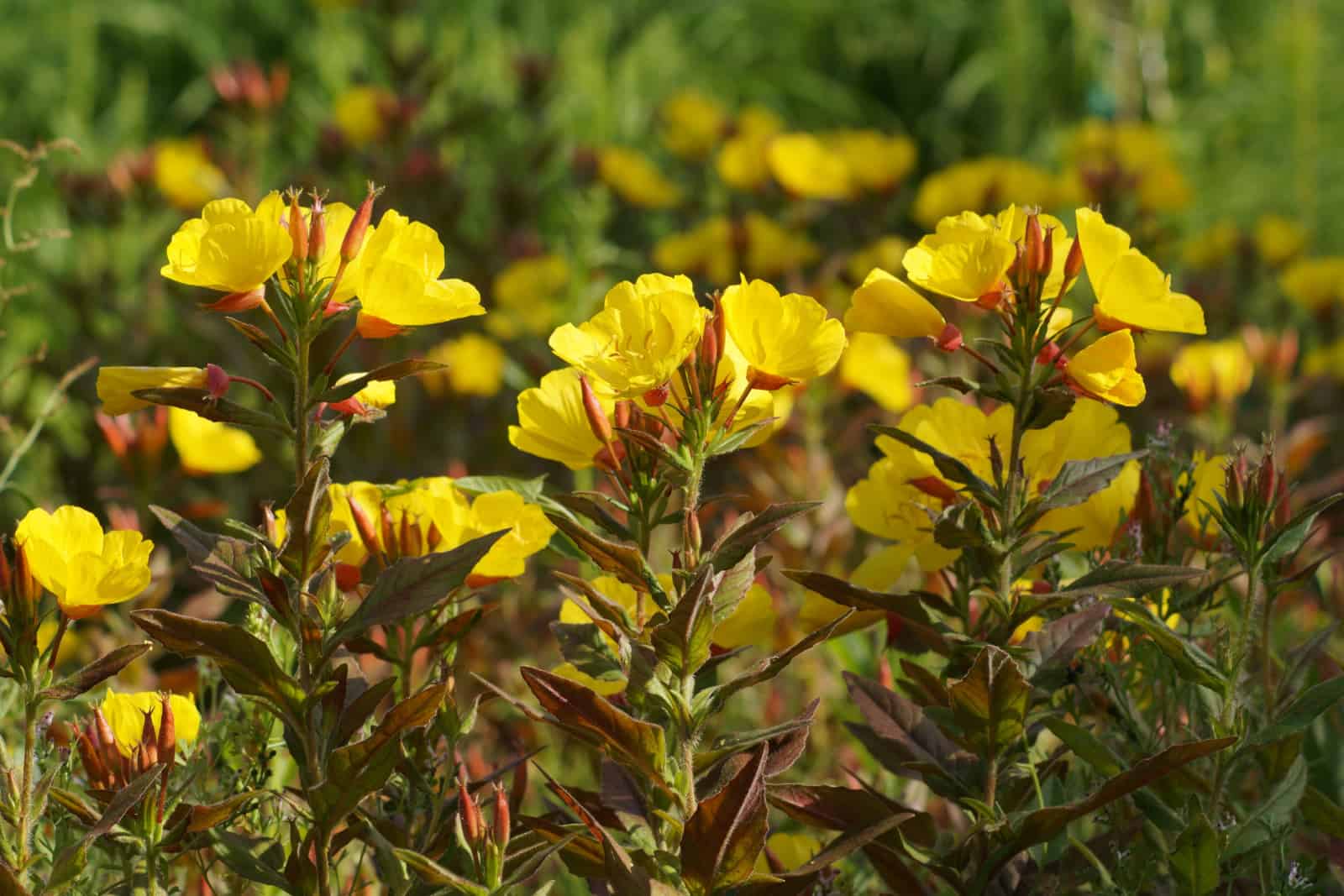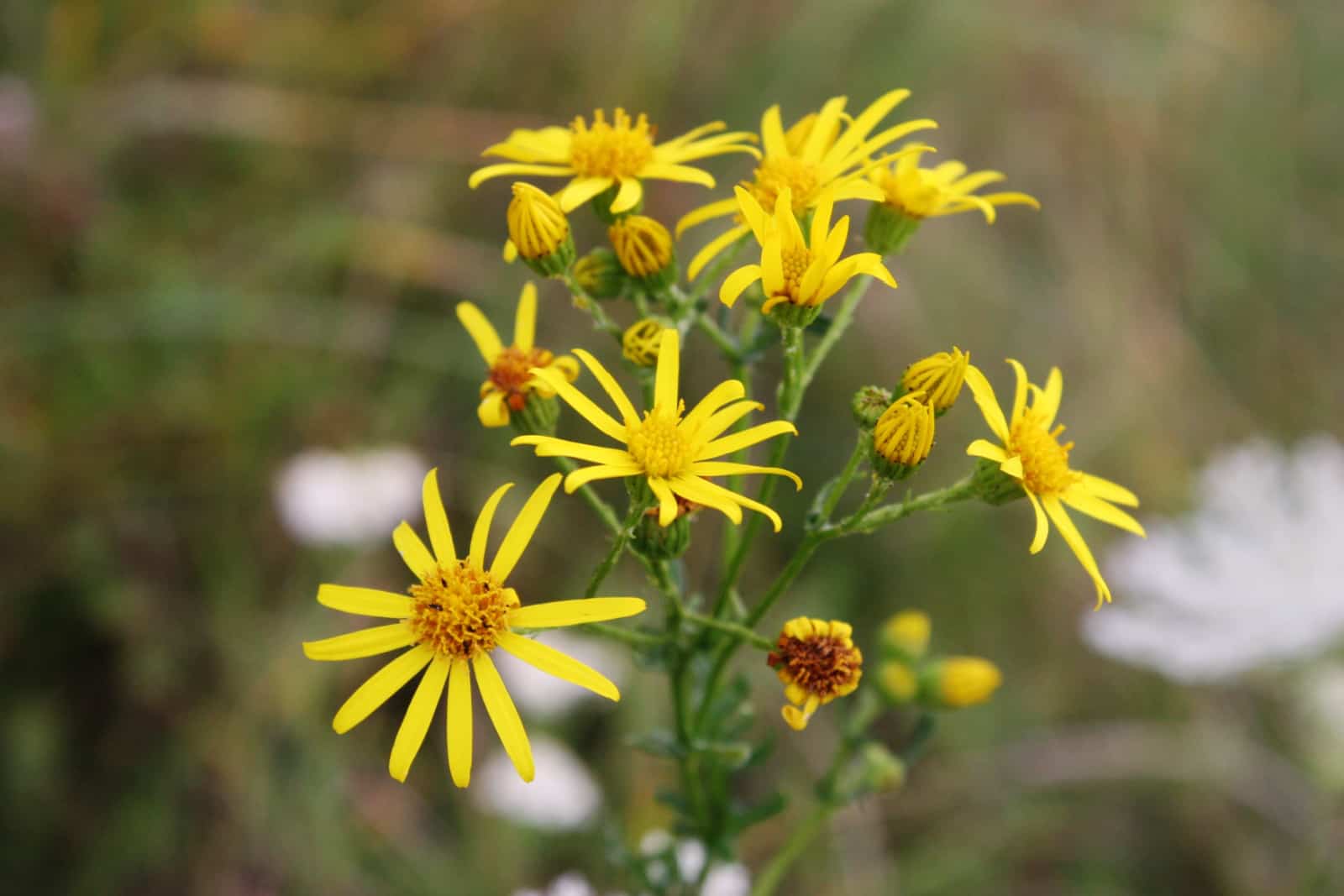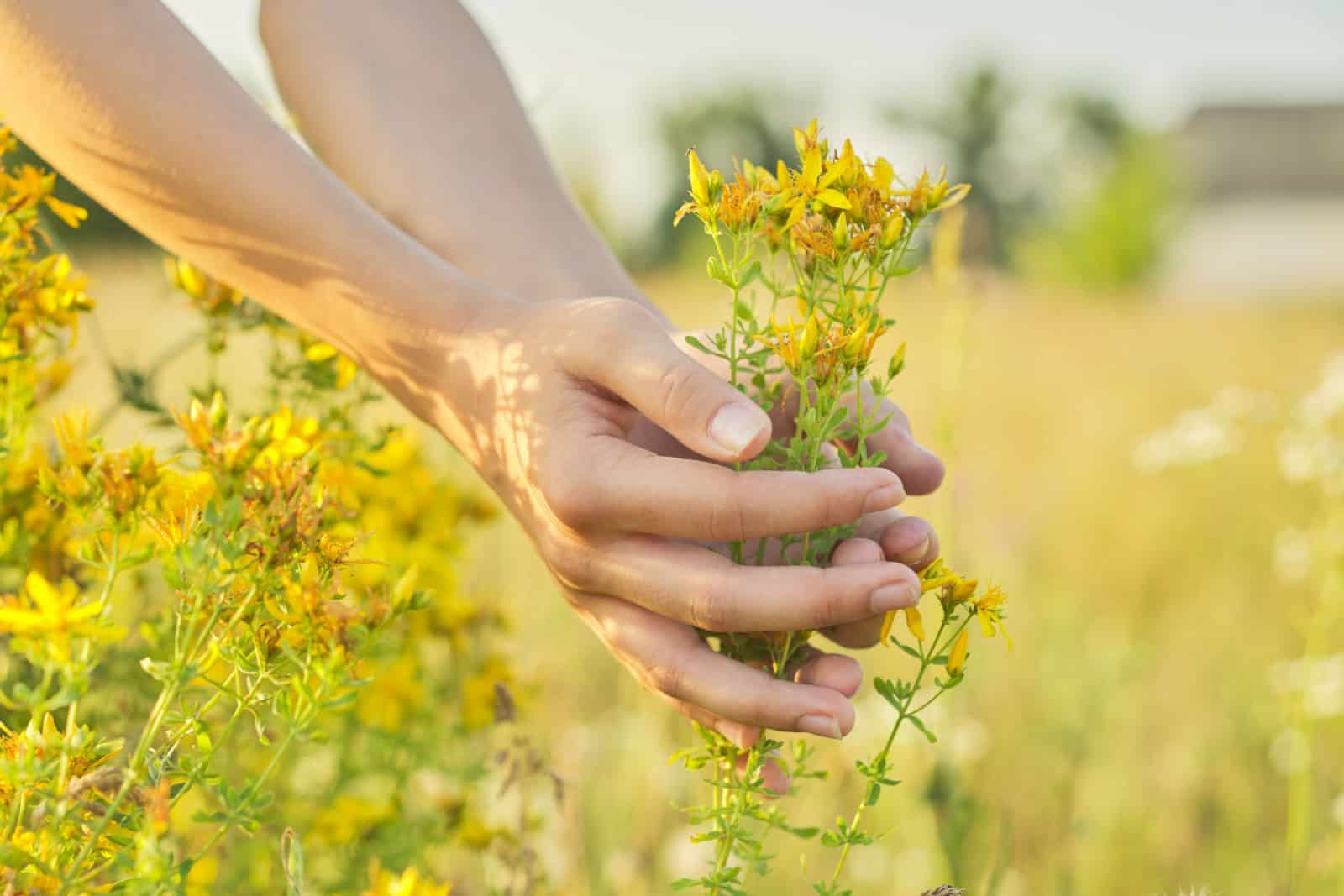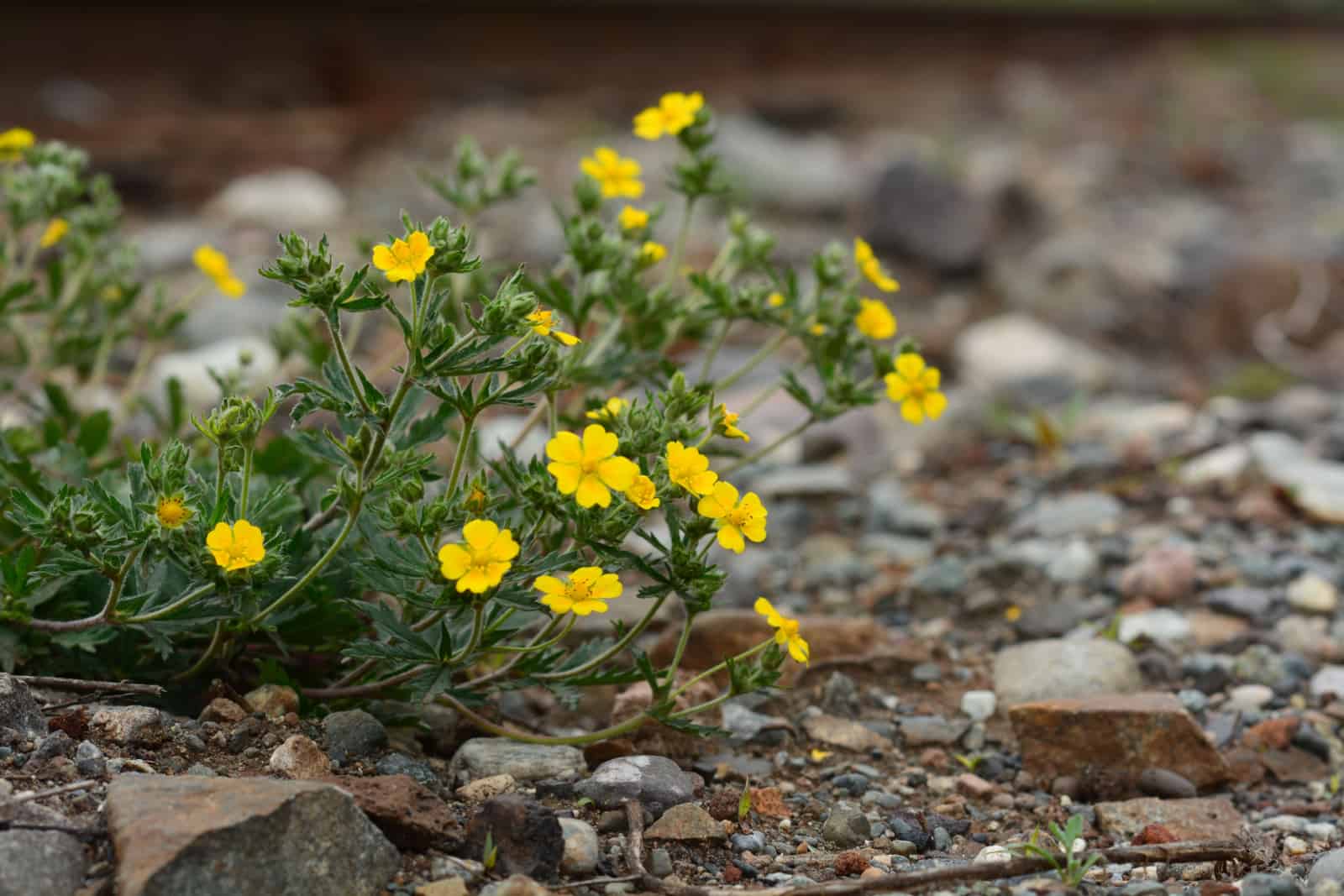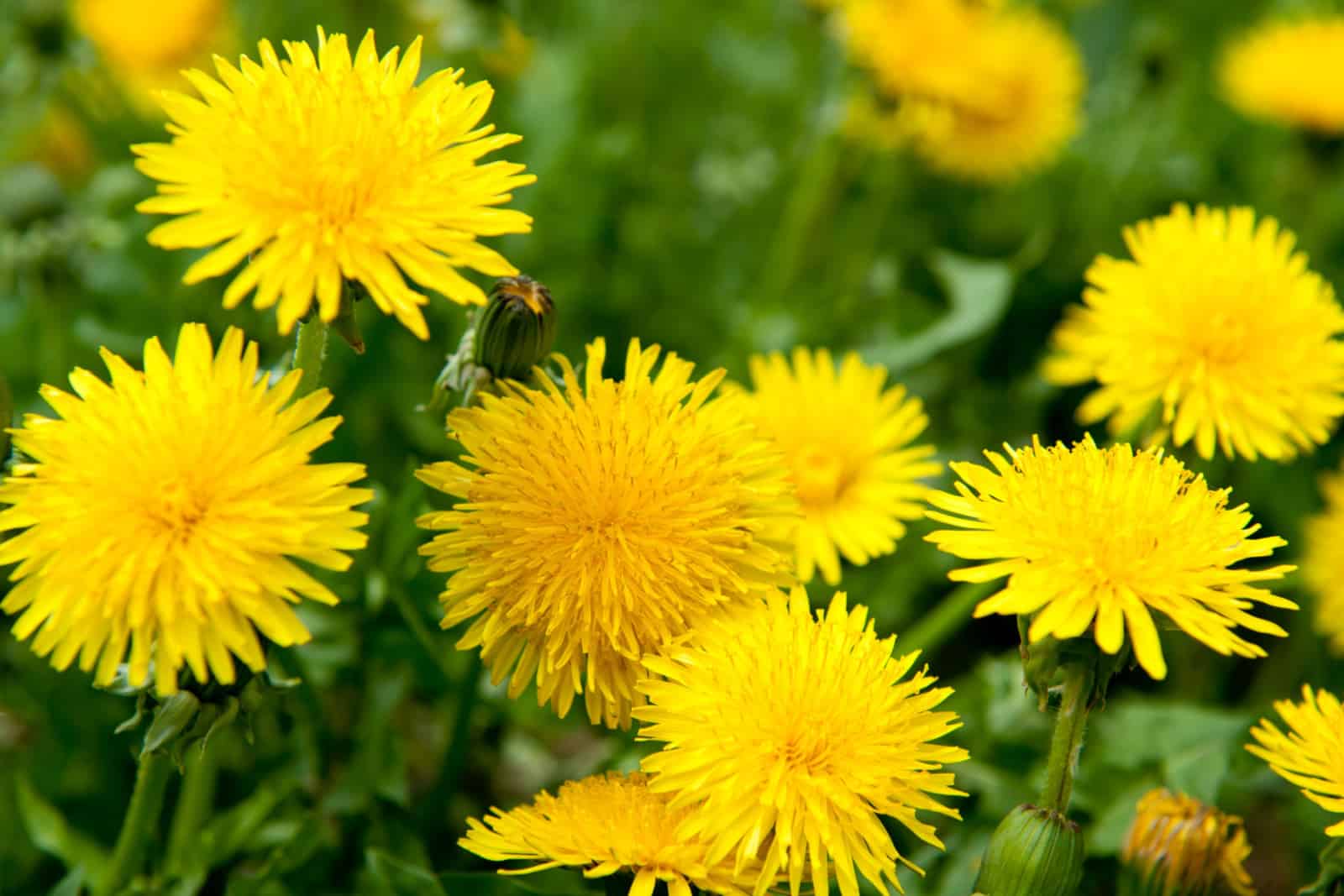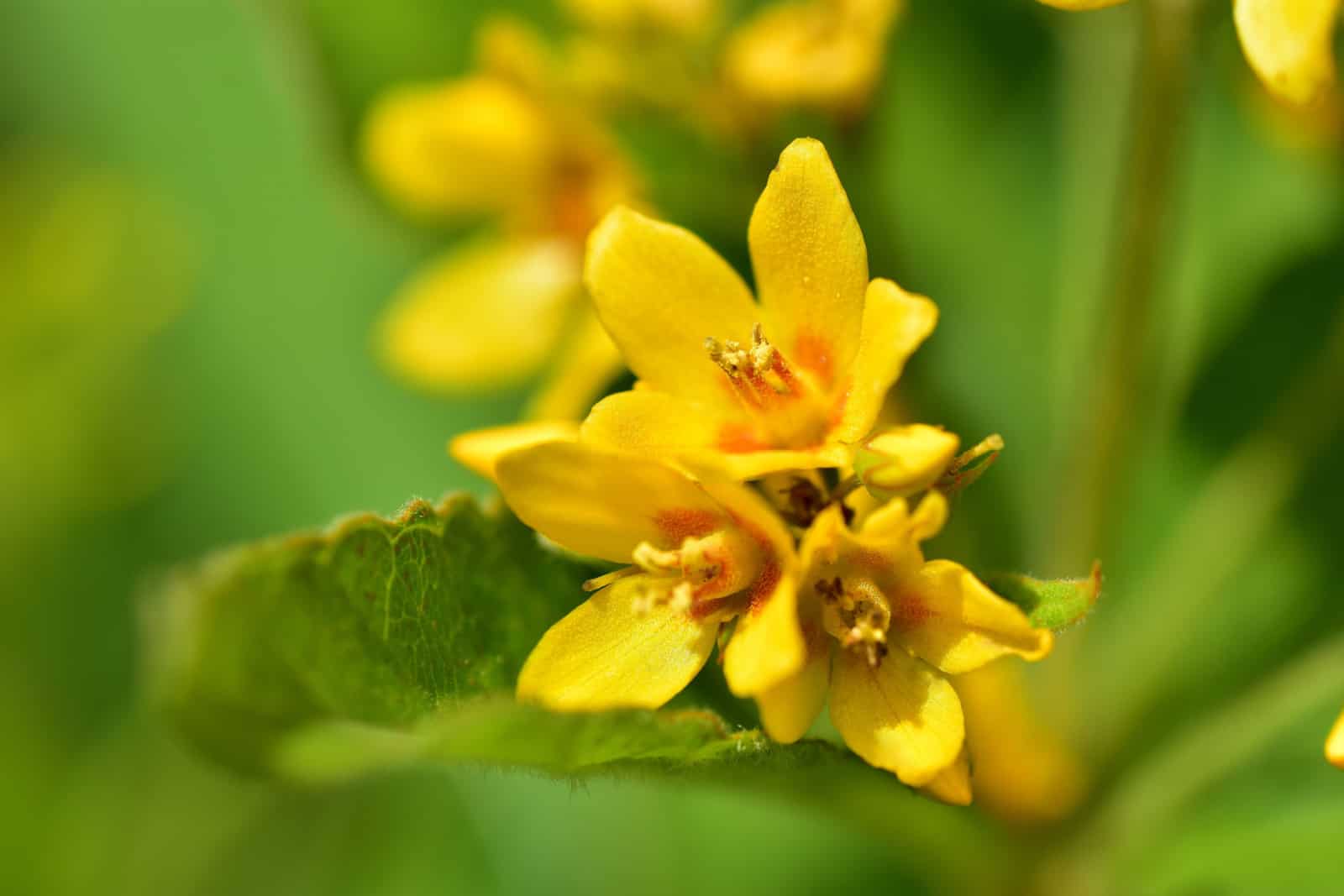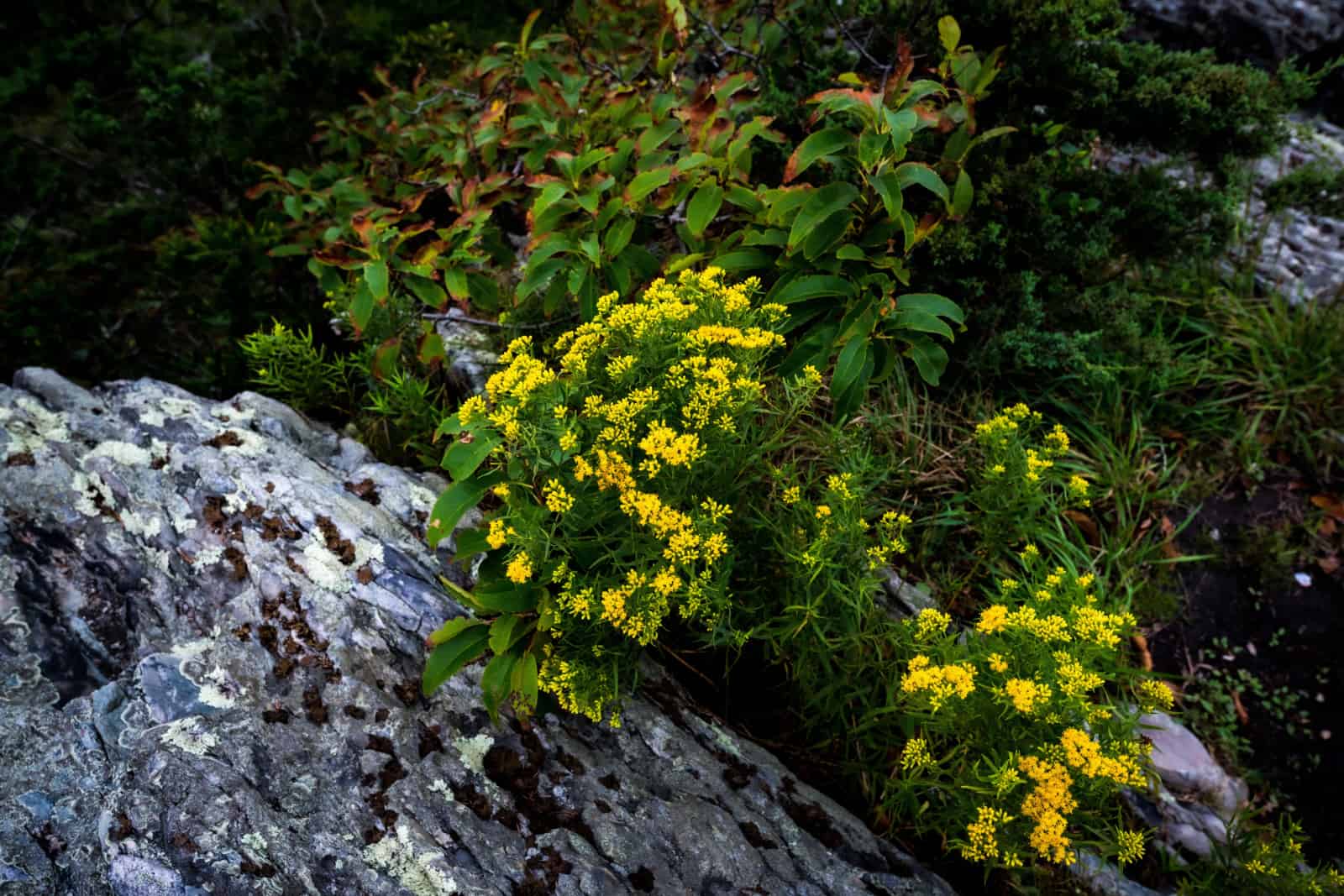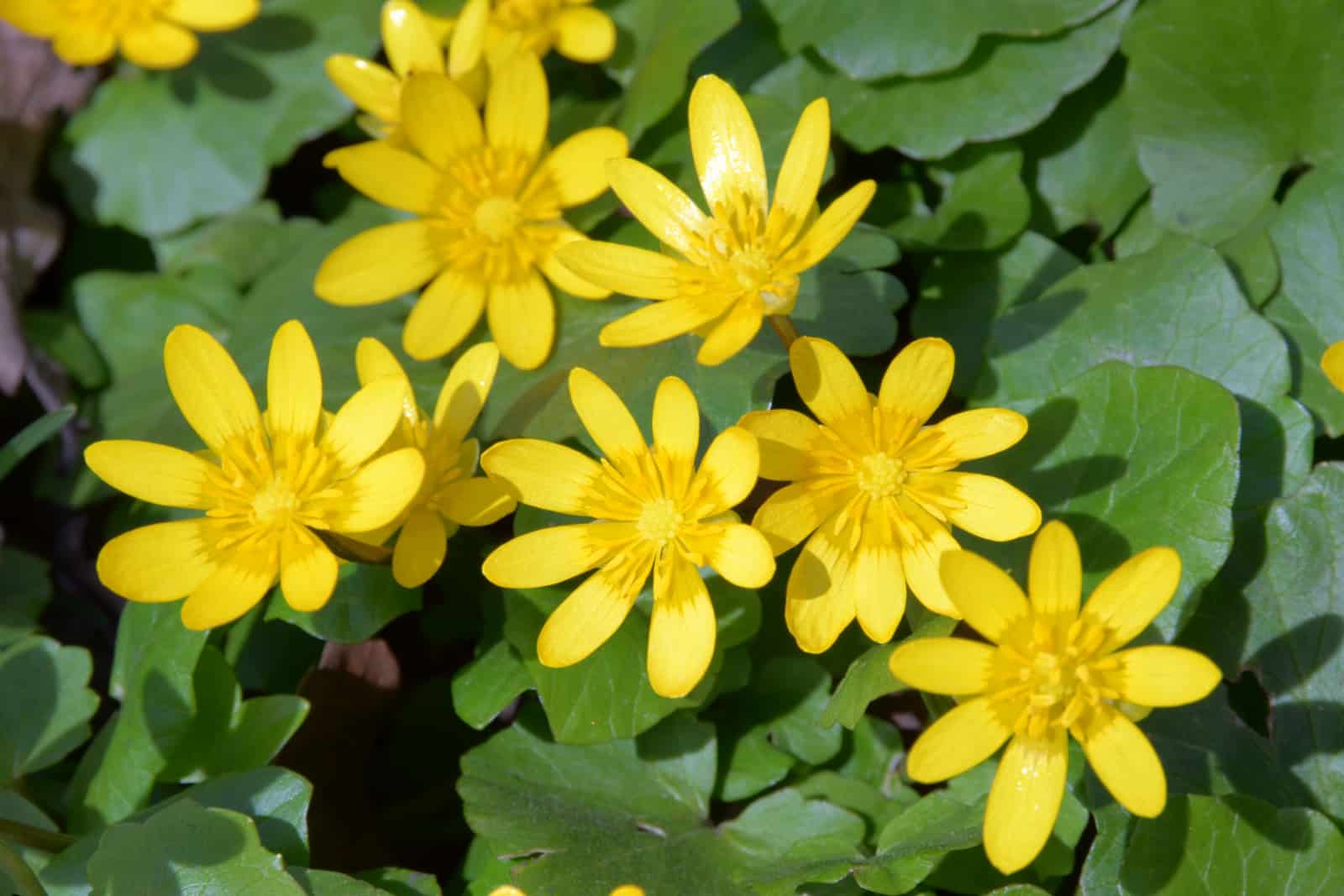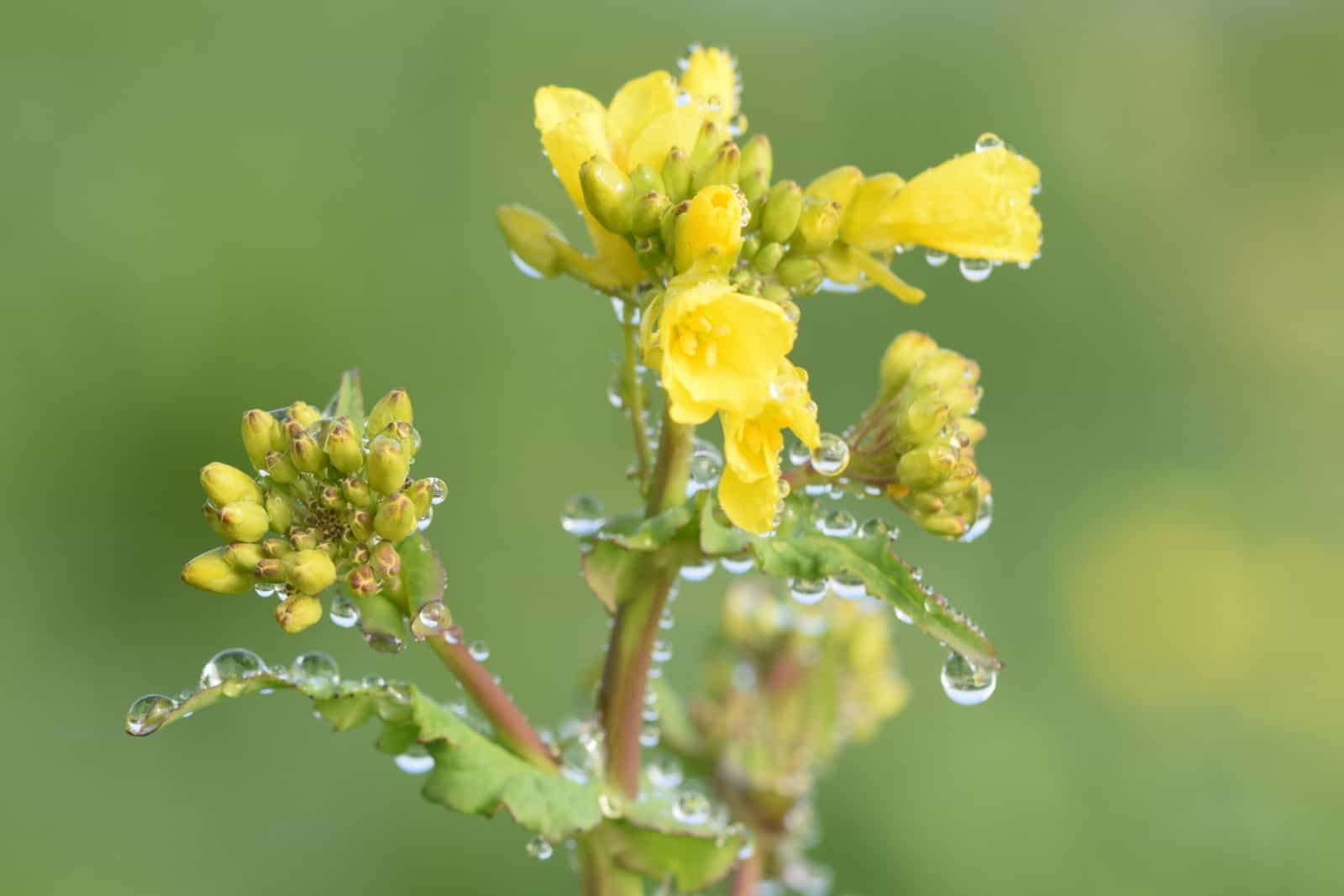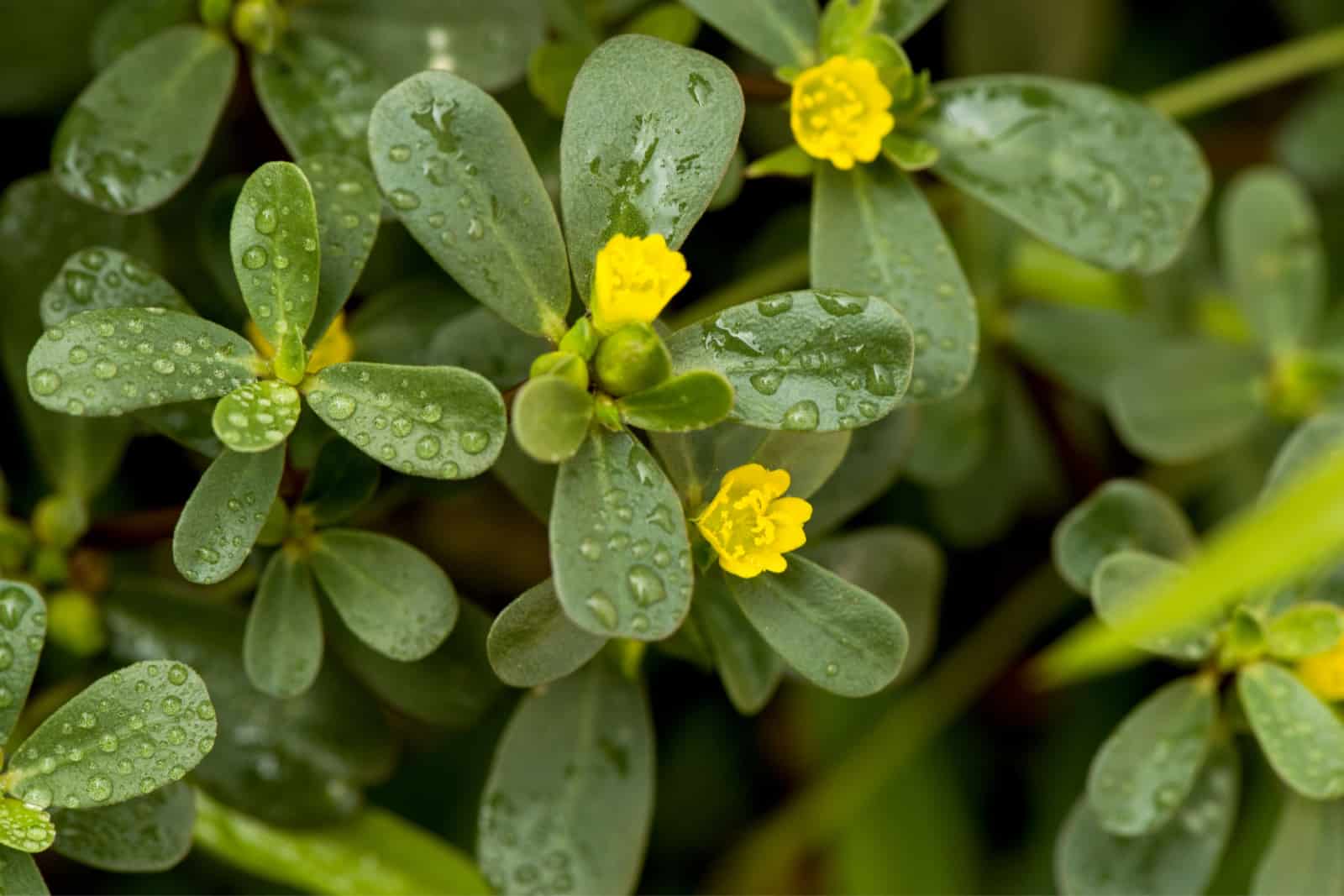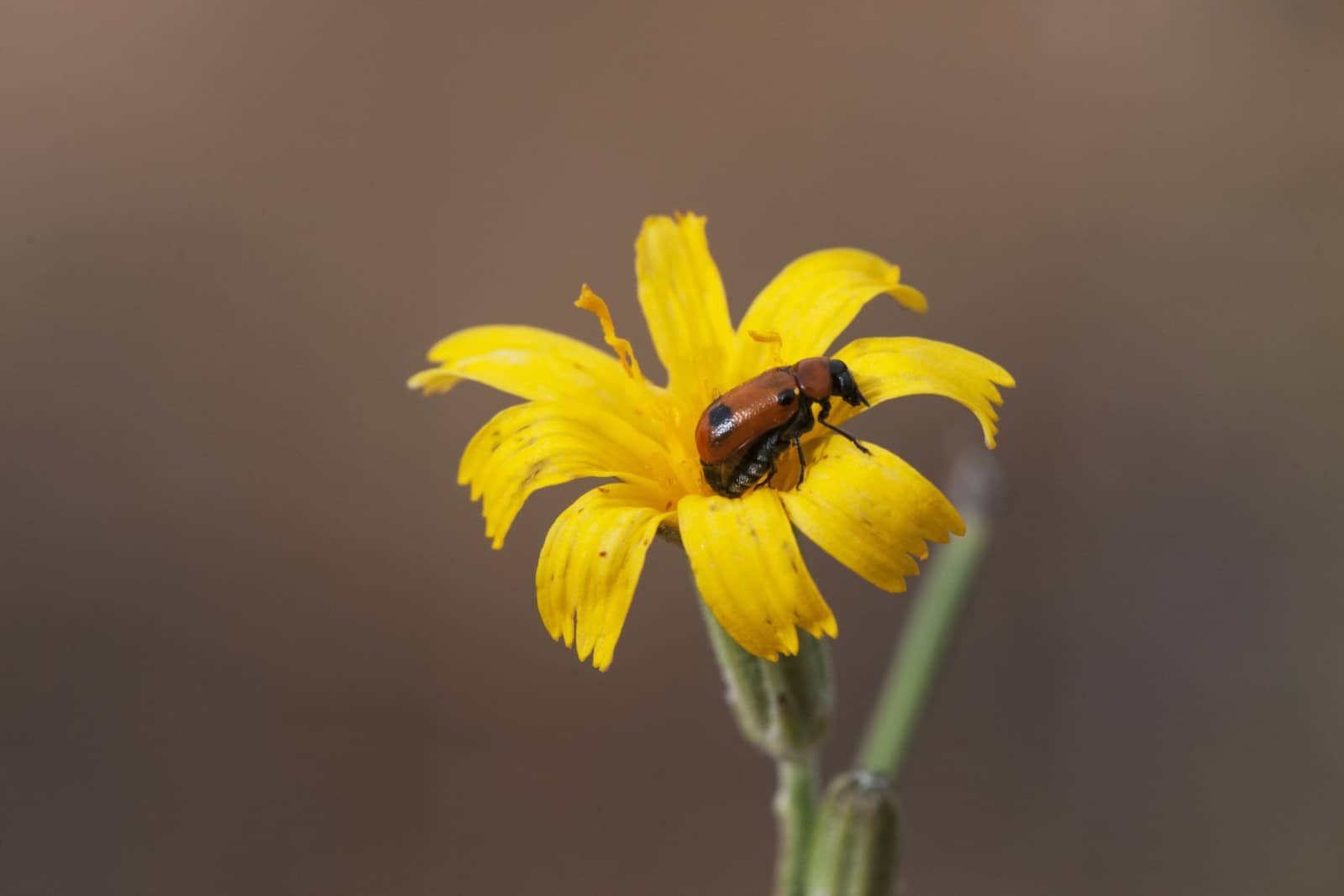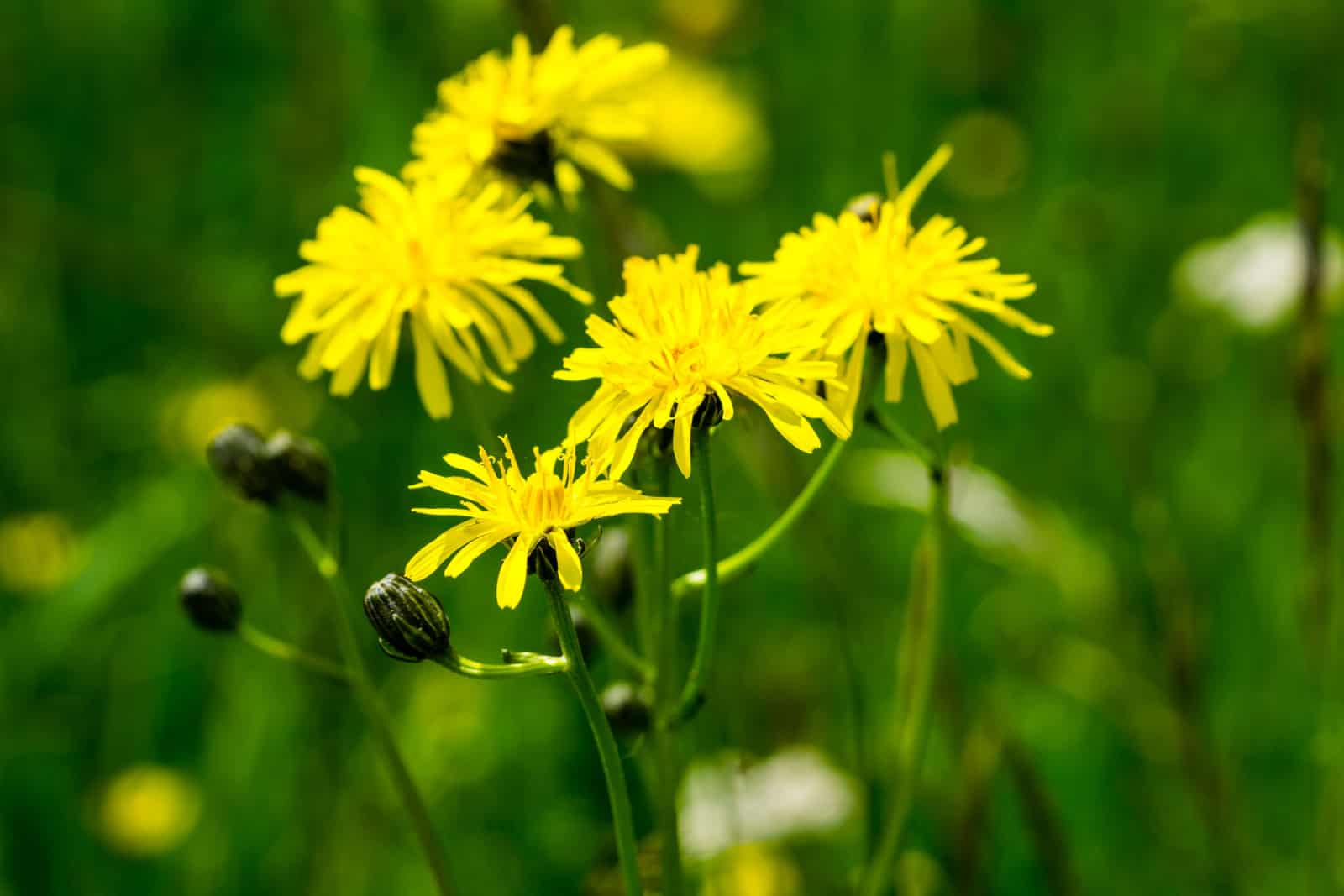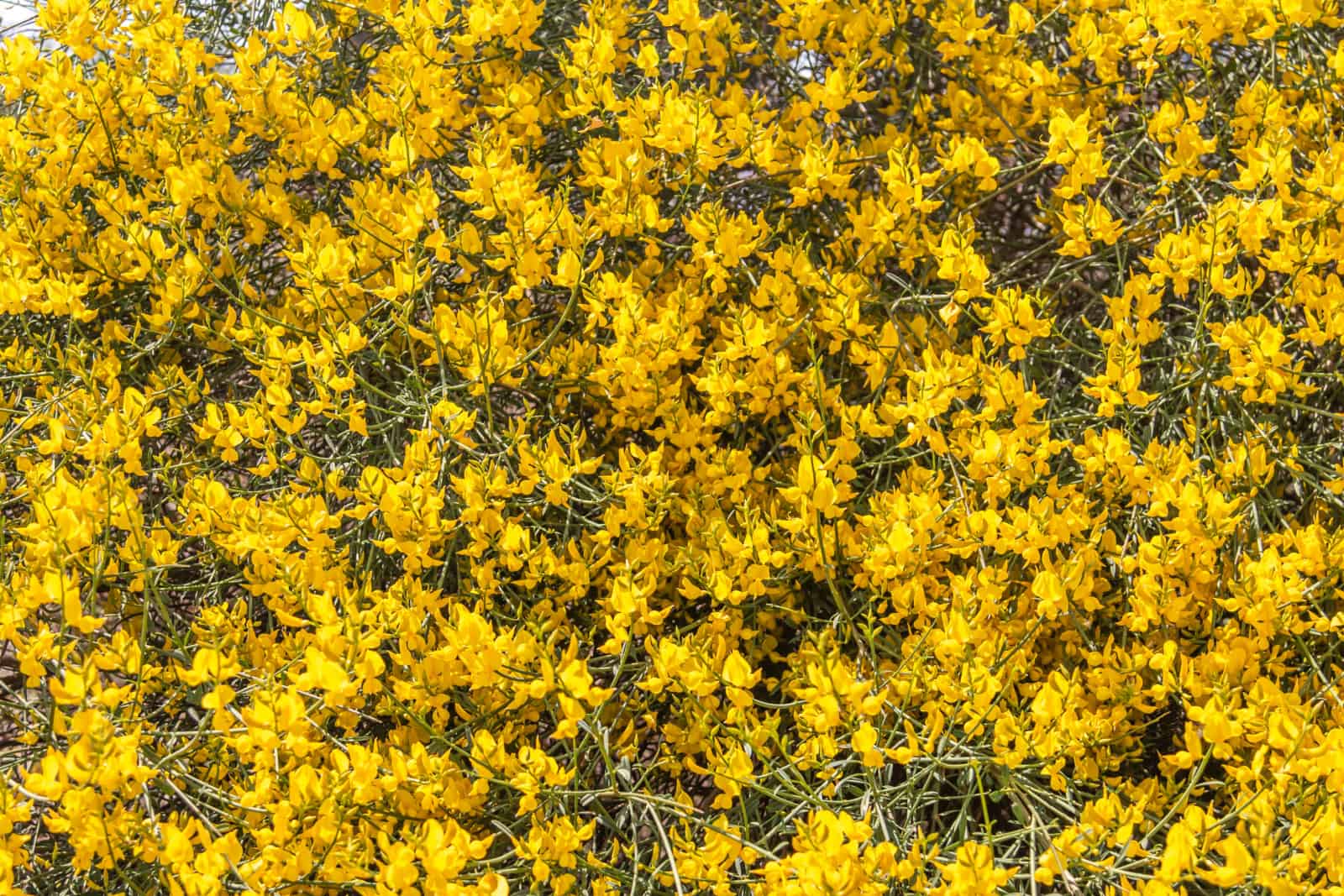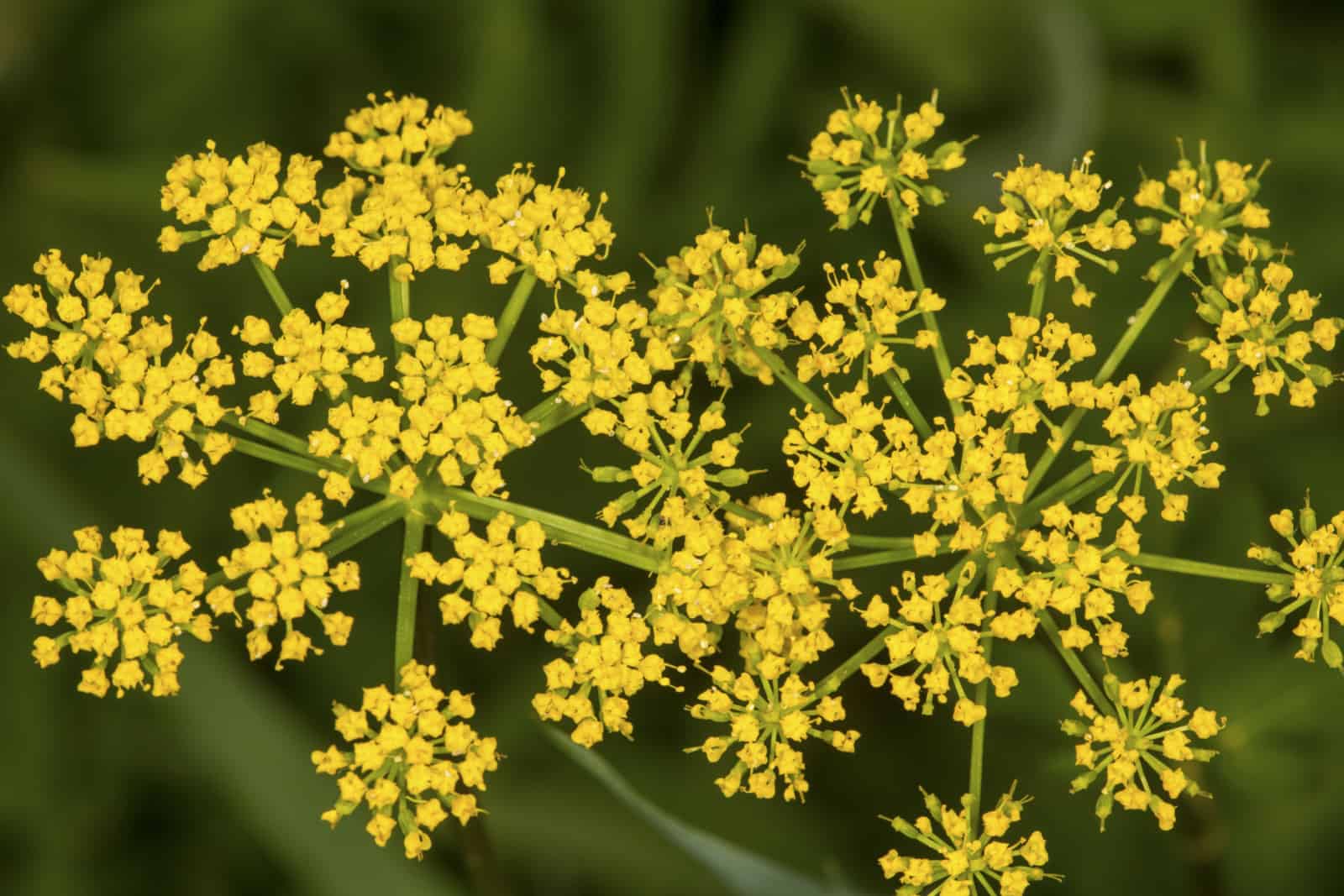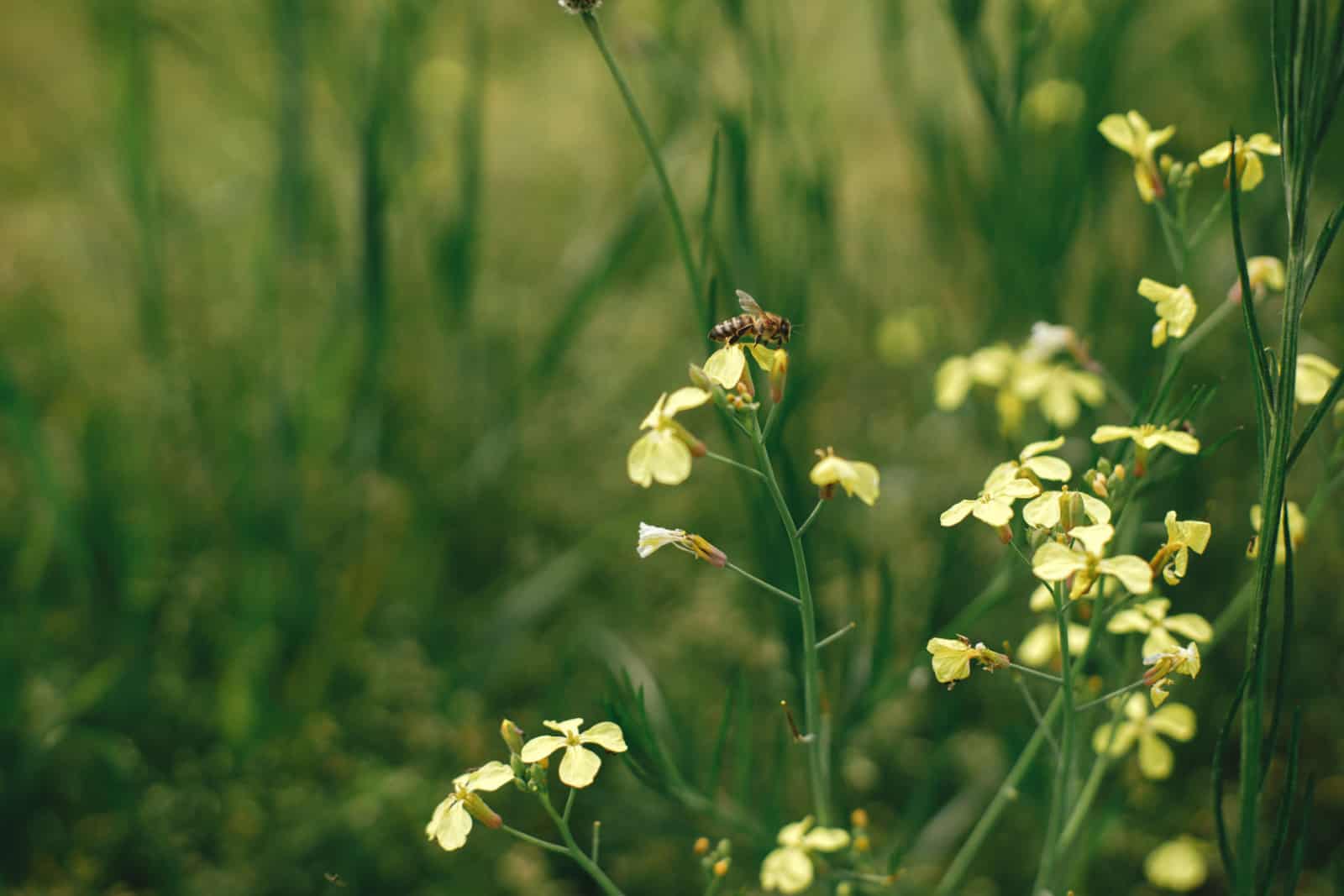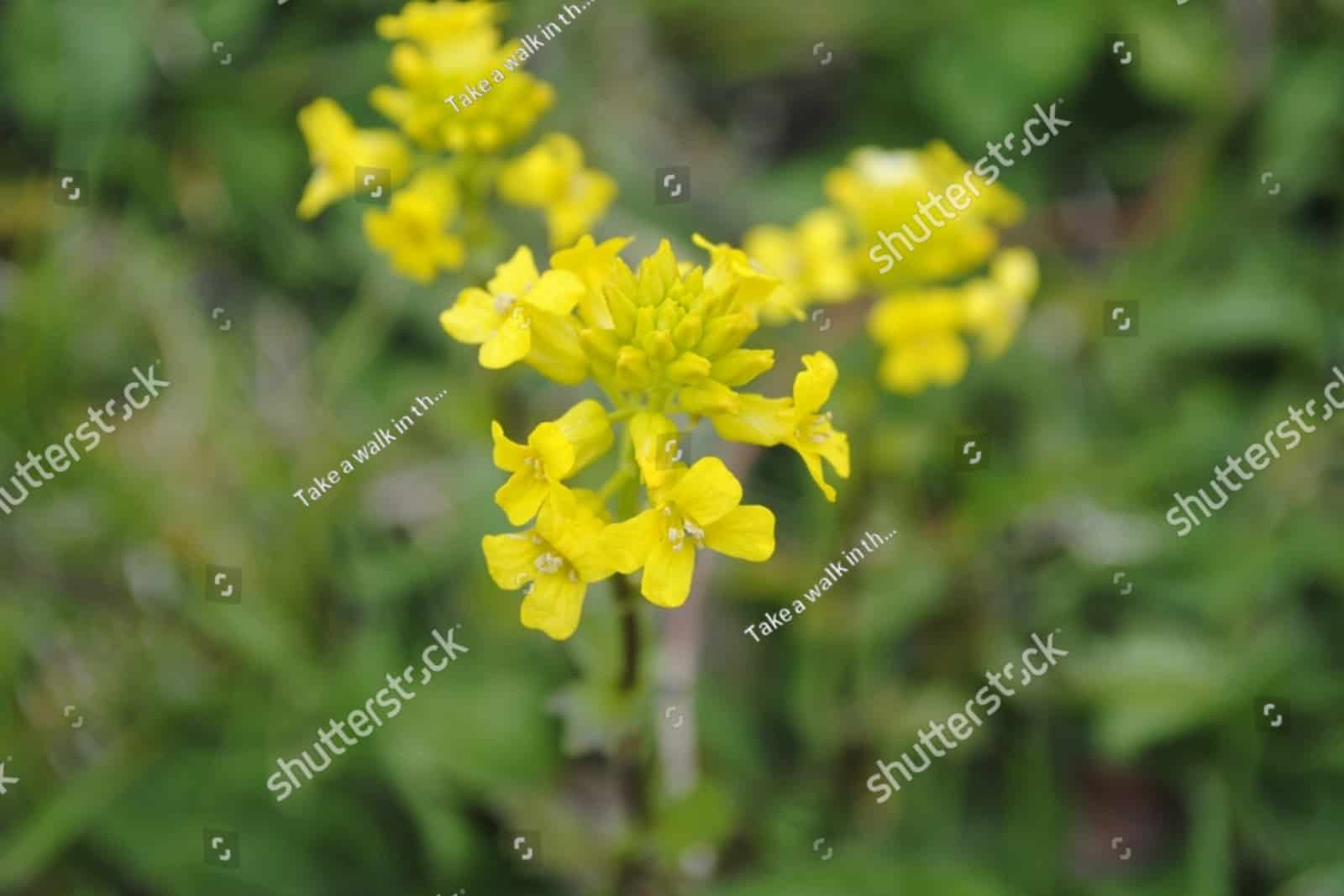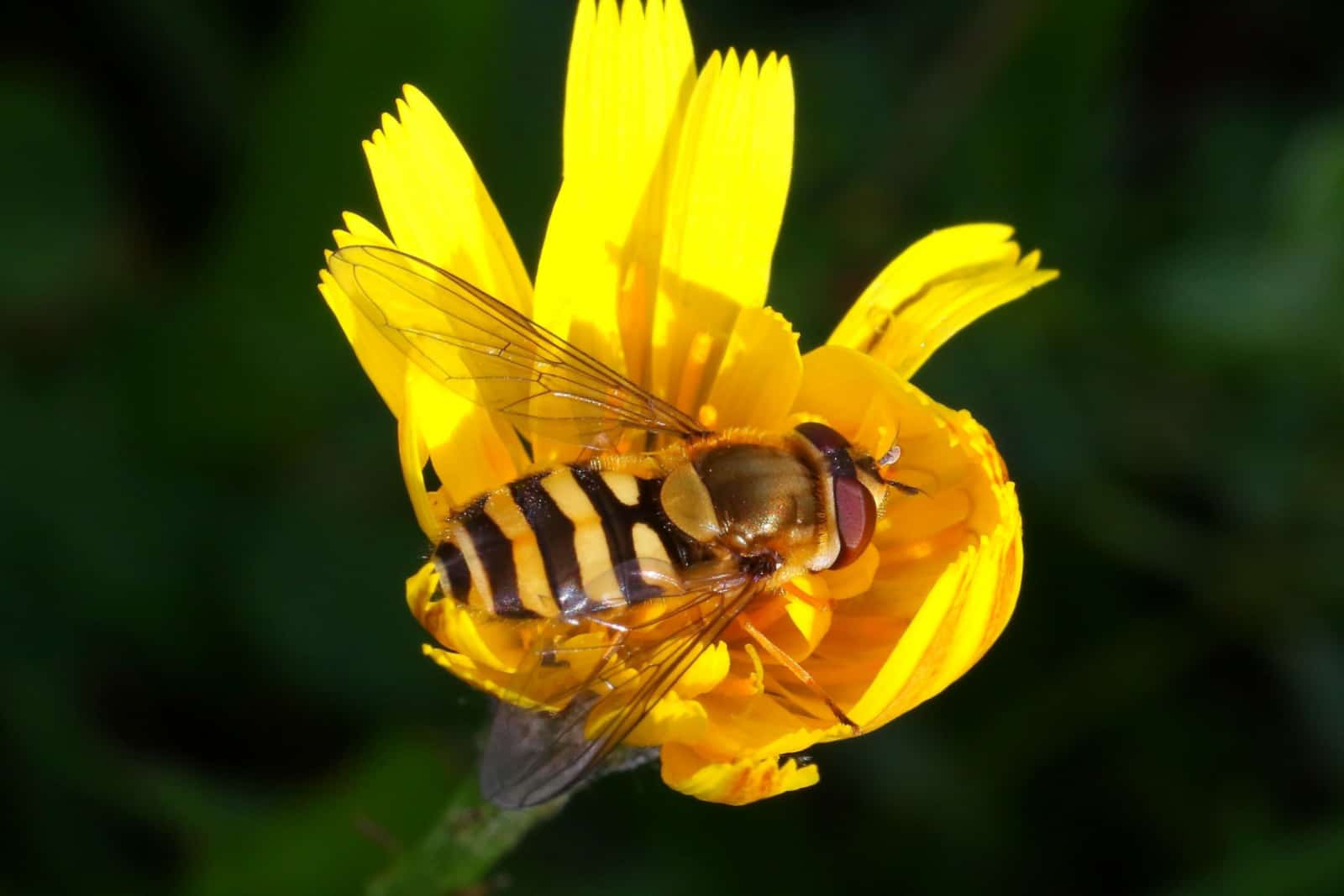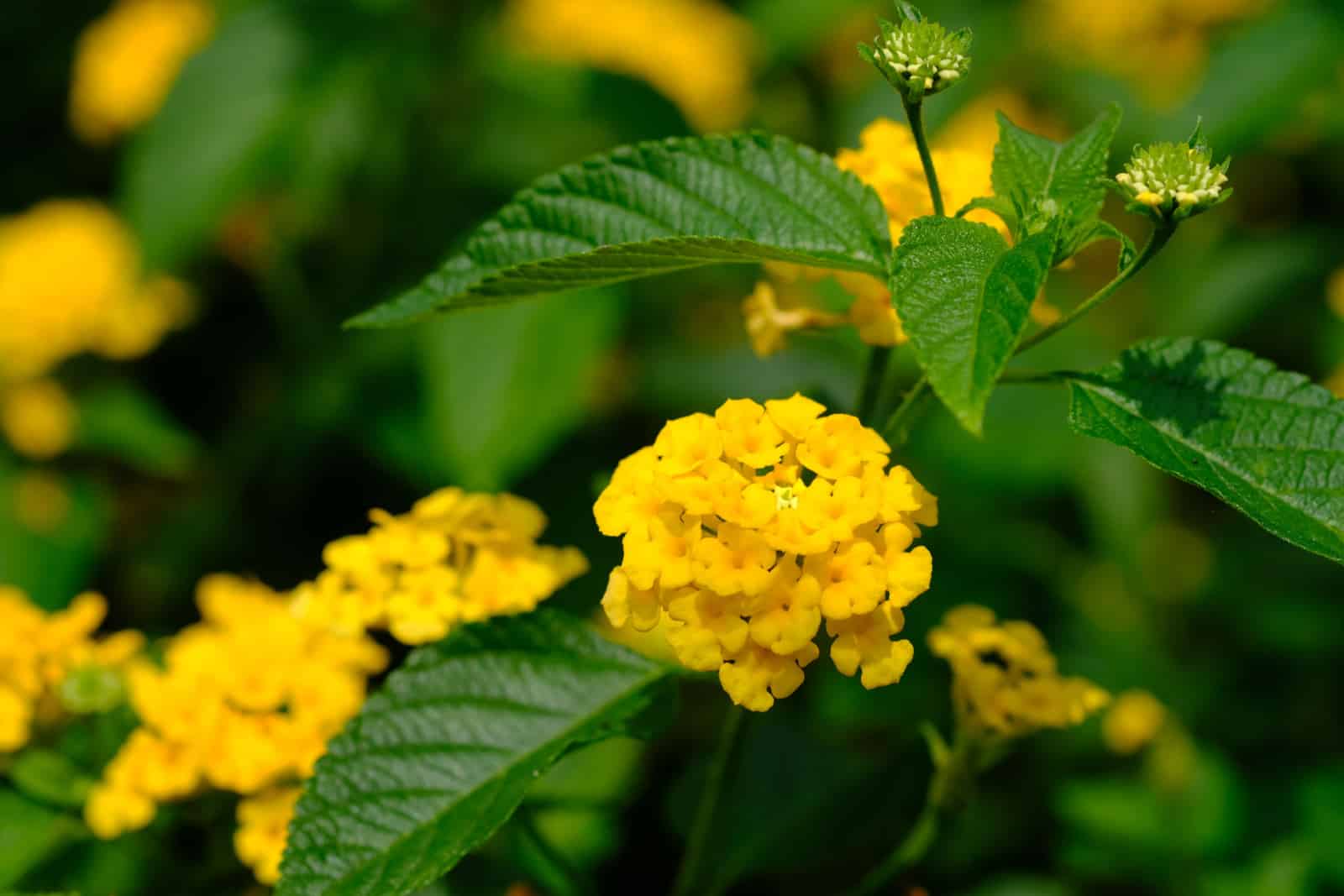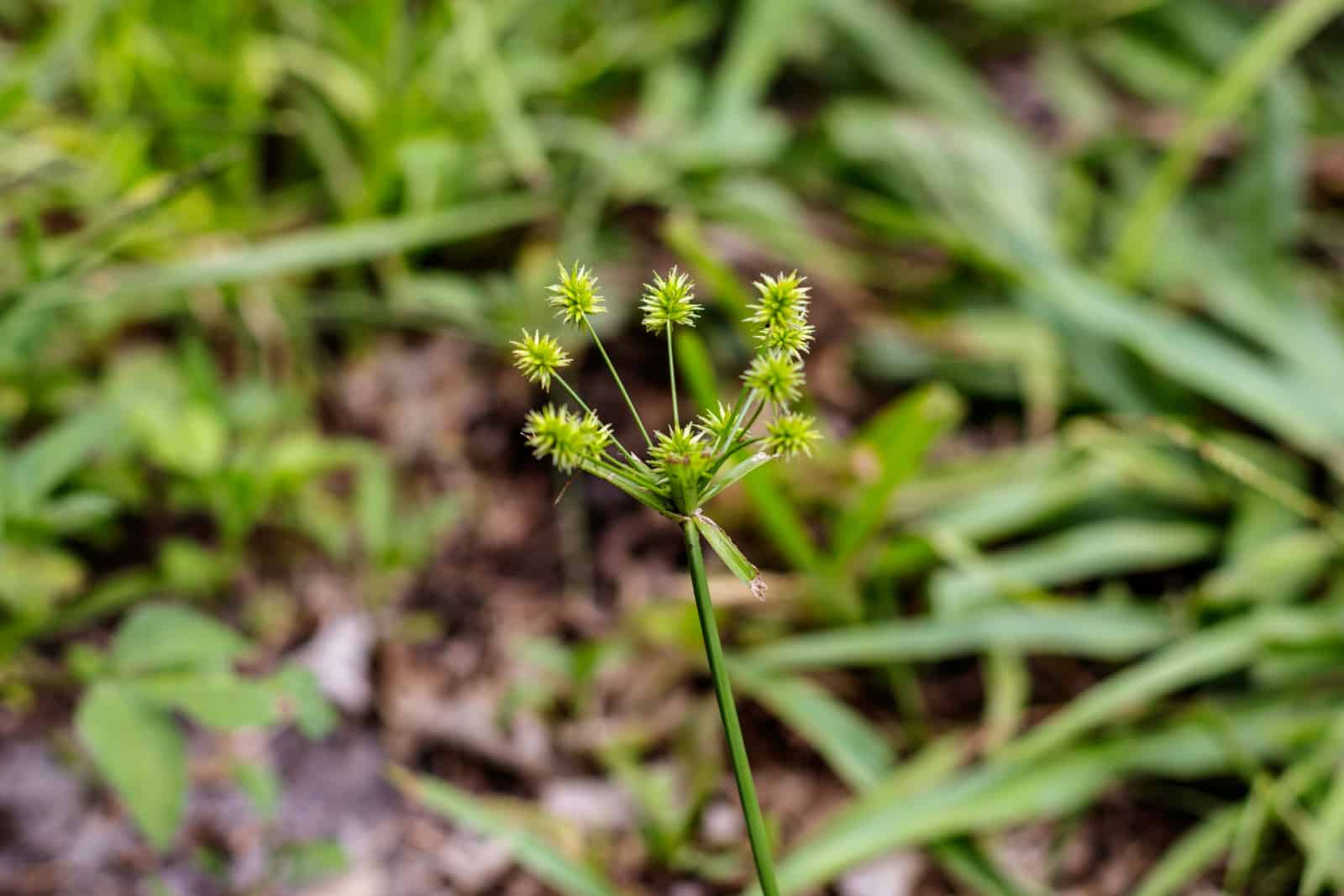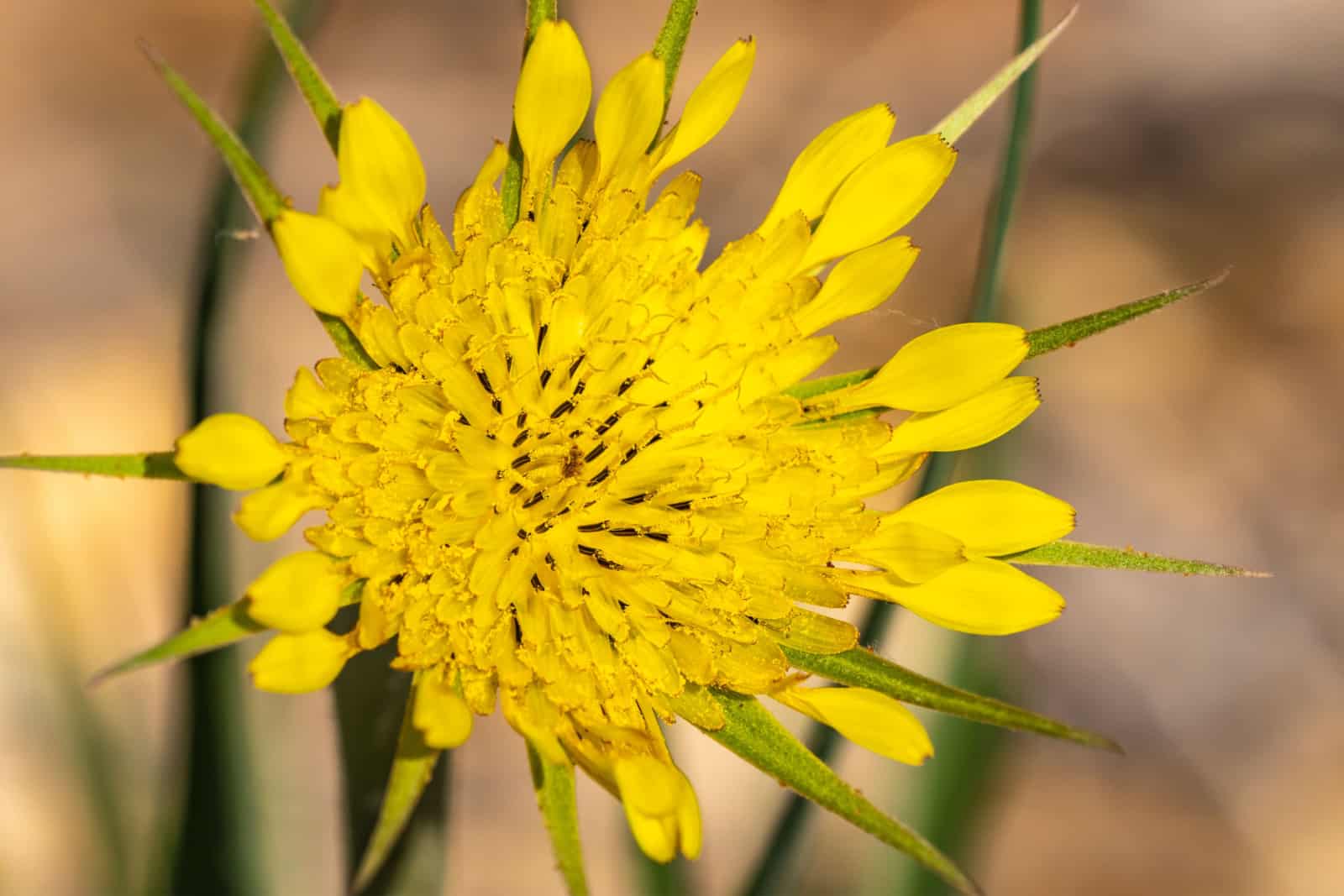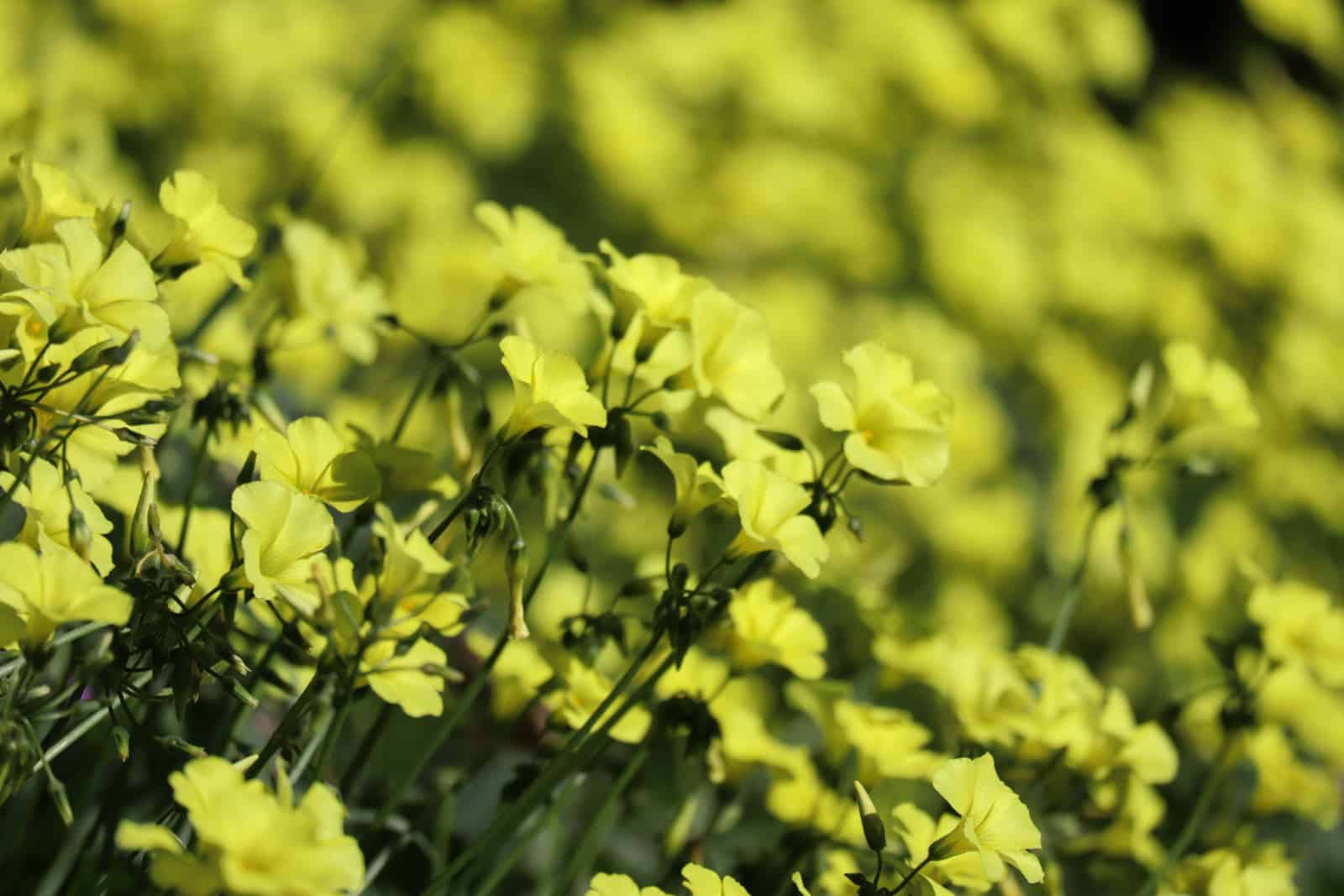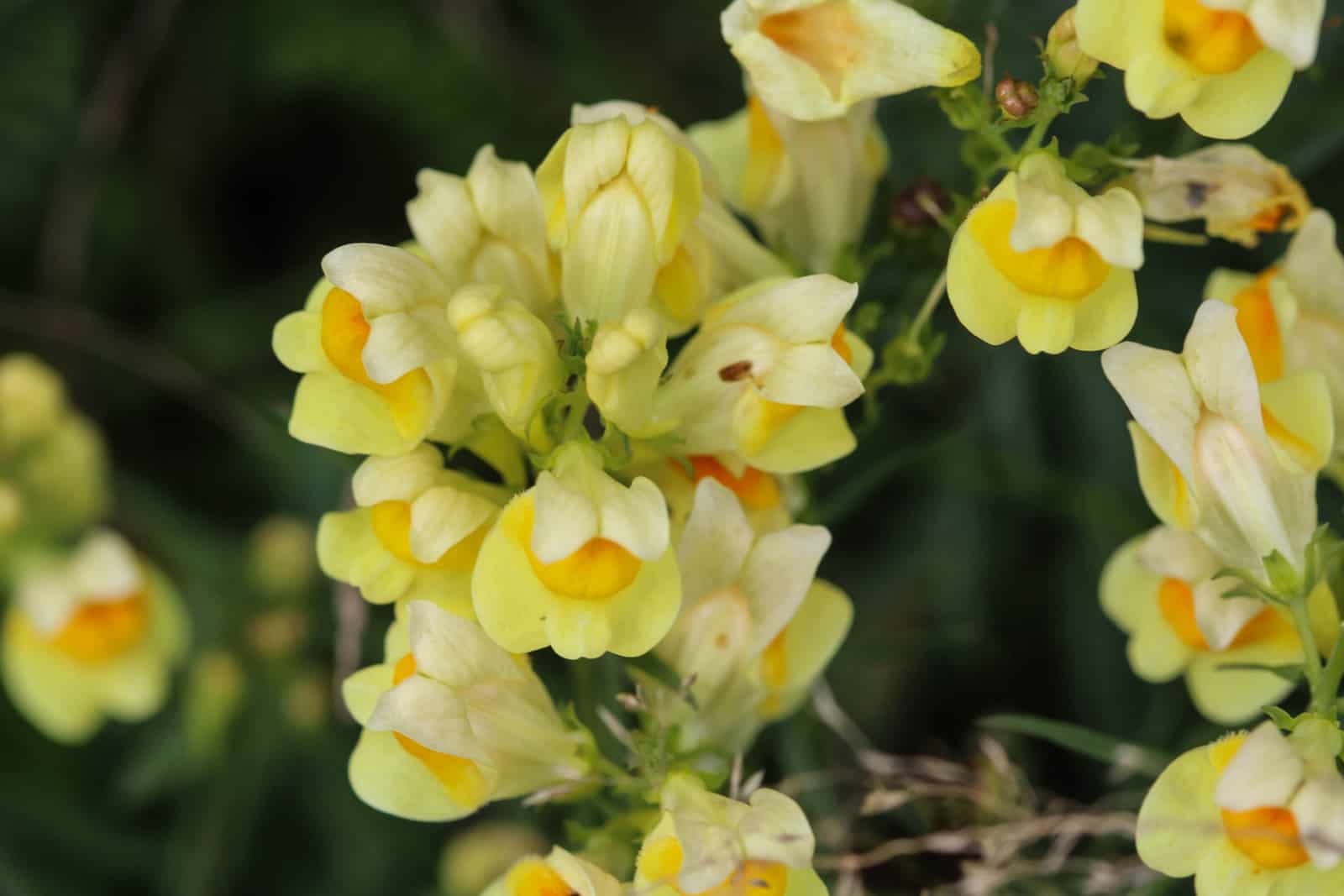Tiny yellow blossoms can beautifully decorate so many things, such as flower beds, rock gardens, and borders. But they don’t look quite as good on lawns.
When you notice dandelions or black-eyed Susans sprouting all over your grass, the natural thought is to get rid of them so you can maintain that traditional lawn look.
That’s why I decided to show you some common weeds with small yellow flowers, examine what they can do to your yard, and offer some tips for removing them.
Let’s get started!
Bird’s Foot Trefoil
Identification: Yellow pea-like flowers can be attractive in certain settings, although lawns aren’t one of them. The oblanceolate foliage has mostly smooth edges, while this entire low-growing plant reaches 1-2 feet in height.
Consequence: The bird’s foot trefoil can self-seed and spread by rhizomes and stolons. It is invasive in many parts of North America and can choke out grass and other plants, which is why you should remove it from your lawn.
Control: This plant thrives in drought-prone and infertile soils, so proper lawn care in terms of mowing, fertilization, and irrigation can prevent it. This will also make grass grow aggressively and inhibit the bird’s foot trefoil from growing. And if this doesn’t help, application of weed killers with dicamba, MCPP, and 2,4-D can eradicate it. (1)
Black-Eyed Susan
Identification: This smaller version of the sunflower does have its appeal when grown in flower beds. It is usually 1-3 feet tall, although some varieties can reach head-spinning heights of 4-6 feet! Lastly, its yellow flowers with black discs are surrounded with narrow, lanceolate or ovate foliage.
Consequence: This plant isn’t considered an invasive species, but it grows aggressively and can quickly overcrowd your yard. Additionally, it will get tall and taint the clean lawn you’ve worked so hard to achieve.
Control: To control the spread of this plant naturally, you can remove the flower heads before they produce seeds, which will prevent them from propagating. You should also remove the entire plant with all the rhizomes since even the tiniest part can produce new plants.
Black Medic
Identification: This member of the legume family is similar to clover, with its globe-shaped flower heads and trifoliate oval foliage. It is usually an annual or short-lived perennial and grows 1-2 feet tall. (2)
Consequence: This plant has a deep taproot that helps it thrive and grow stronger than lawn grass. And since it’s low-growing, it can prevent the germination of grass seeds and result in unsightly patches. The black medic weed is non-native and grows aggressively.
Control: Mature plants have deep taproots, so they’re hard to pull out. Therefore, you should suppress their growth with post-emergent herbicides containing dicamba, MCPP, and fluroxypyr. Of course, the best treatment is prevention, and if you mow your lawn regularly and keep it well-watered and fertilized, this weed won’t spread as much. (3)
Butterweed
Identification: The buttery yellow petals and deeper yellow or orange discs of this plant aren’t that bad-looking. It reaches a height of around 3 feet. While the plant is still young, the leaves’ edges are smooth, but as it matures, the foliage becomes more lobed. It is severely toxic to horses and cattle, and its ingestion can be fatal. (4)
Consequence: Even though this plant is native to North America, it can still spread aggressively and overcome other plants. It can also cause digestive problems for your pets and is toxic to humans, so it’s best to eradicate it from your lawn.
Control: The best way to control this weed is with 2,4-D while the plant is in the rosette phase, although you’ll have to apply it more than once.
Canada Goldenrod
Identification: The flower of the Canada goldenrod doesn’t look like a real flower at all. Instead, it just resembles a pyramidal stem covered in millions of hairy blossoms. The toothed, lanceolate leaves are deep green and narrow towards the base. The plant itself can get 6 feet tall, but it usually stops growing once it reaches 2-4 feet.
Consequence: The light seeds of the Canada goldenrod are easily transferred by wind and can quickly germinate. The plant will compete with your grasses and other floral species, overcrowding and suffocating them. Not to mention how it can easily taint your lawn with its size!
Control: If you notice young Canada goldenrod on your grass, use weed killers with triclopyr to destroy it completely. However, this herbicide can harm regular grass types in Florida or other warm regions, so remember to overseed after applying it.
Common Evening Primrose
Identification: Lemon yellow, bell-shaped flowers of the common evening primrose have an interesting cycle. They’re open from evening until morning and close once the heat strikes. They have plenty of lanceolate, narrow leaves all along the stem and can get anywhere between 2-6 feet tall.
Consequence: Even though this primrose isn’t your everyday weed, it self-seeds and spreads like one. It can also multiply by rhizomes, so mowing it won’t help much. Its size can disturb the neat lawn appearance, so either move it to a flower bed or remove it completely.
Control: If you want to remove common evening primrose, you can mow it before it flowers to prevent it from self-seeding and then pull it out of the ground. Make sure to take the entire root system out so that it doesn’t grow again. And if it has spread massively, you can treat it with some broadleaf herbicides.
Common Ragwort
Identification: Ragwort belongs to the daisy family, so it does have an appealing look. It has short stems supporting many yellow flowers and pinnate, lobed foliage. Its other common name is stinking willie, so you can imagine why people want to get rid of it. It gets around 18-30 inches tall.
Consequence: This plant is poisonous and can hurt cattle, horses, chickens, pigs, etc. It also produces tens of thousands of seeds in 4-6 weeks, so it can spread rapidly all over your yard. It can become invasive, so it’s best to eradicate it from your lawn.
Control: To prevent it from spreading all over your lawn, mow the plant before it flowers to stop it from seeding. You can also pull it from the ground if it’s localized to one area, but ensure you take the entire root system out. Plowing can help as well, but if this isn’t an option for you, you can use herbicides with MCPP or 2,4-D. (5)
Common St. John’s-Wort
Identification: The flowers of this plant echo real yellow stars, even more so when you catch a glimpse of its myriad stamens that resemble light rays. Narrow and oblong leaves are smooth and decorate the entire plant, which can reach a height of 6 feet and a width anywhere between 3-6 feet.
Consequence: This species multiplies by rhizomes and seeds, producing up to 34,000 seeds each year. Therefore, it can invade a large area and harm many animals, causing skin lesions, dead tissue, and other health problems. (6)
Control: Since competition prevents the growth of St. John’s-wort seedlings, maintaining a healthy lawn can be the best way to prevent weed growth. Mow, fertilize, and water your grasses regularly to achieve this. If there are just a couple of plants, you can pull them out, otherwise you can use herbicides with 2,4-D or metsulfuron.
Creeping Buttercup
Identification: The bright yellow cup-shaped flowers, and egg-like or triangular serrated leaves make it a bit hard to eradicate this plant from your lawn. It reaches heights of 1.5 feet, but you’ll still notice it among the blades of grass.
Consequence: This plant spreads by seeds and stolons, and can compete with your lawn for nutrients – especially potassium. Therefore, you shouldn’t let it grow out of hand since it’ll not only taint your all-green lawn, but risk its health as well.
Control: You can reduce the population of this weed by using post-emergent weed killers containing 2,4-D, MCPA, and aminopyralid.
Here are some more tips for weeding creeping buttercup:
Creeping Cinquefoil
Identification: Yellow heart-shaped petals form the cup of the creeping cinquefoil and don’t look half bad. However, oblong and toothed, deep green foliage really doesn’t go well with lawns, so I always remove it when it appears in my front yard. Luckily, it doesn’t grow taller than 6 inches, so the grass can overcrowd it if I forget to eradicate it.
Consequence: This plant spreads its runners, which quickly root and can quickly invade your entire yard. It has an invasive personality and will suffocate your other plants if you let it.
Control: Proper lawn care will ensure perfect conditions for grass growth and inhibit the development of creeping cinquefoil. This involves regular aeration, fertilization, mowing, and irrigation. Since this weed has deep roots, it might be difficult to pull it out of the ground completely, but you can use herbicides containing 2,4-D, dicamba, etc.
Cypress Spurge
Identification: This species can appear as a bushy ground cover and grow up to 6-12 inches in height. Linear light green foliage and bright yellow cup-shaped flowers aren’t that attractive, so you won’t feel bad about getting rid of this weed.
Consequence: The cypress spurge contains latex, which can cause skin irritations and blindness, so it isn’t safe for animals or humans. It usually spreads by seeds, but it can multiply by rhizomes too. The cypress spurge is an aggressive grower and will suffocate your native plants and grasses.
Control: Since the cypress spurge thrives in poor and dry soils, regular lawn care will inhibit its growth. You can also pull or dig it out, but make sure to remove all the rhizomes since it can grow from the root remnants. I use weed killers with quinclorac, 2,4-D and dicamba, or picloram after pulling it out to ensure it’s removed completely. (7)
Dandelion
Identification: I love the airy circles and yellow flower heads of dandelions on my lawn, so I’m not that keen on removing them. And since they grow between 2 and 24 inches tall, they don’t completely ruin my grass; especially since you can harvest their spear-shaped, serrated leaves and add them to your salad.
Consequence: Dandelions spread by seeds or roots and can quickly invade your entire lawn. They grow in short clumps and can look unsightly if you want a clean lawn.
Control: The good news is that there are some great herbicides for bermuda grass that won’t harm your lawn, but will get rid of this broadleaf weed. Use one that contains compounds such as dicamba, 2,4-D, fluroxypyr, etc.
Here are some more tricks you can implement to eradicate this weed from your lawn:
Garden Loosestrife
Identification: The pyramidal flower head consists of many bright or golden yellow cup-shaped flowers. And what distinguishes it from other plants is its lanceolate or sometimes egg-shaped foliage that mostly comes in threes. It usually gets 2-3 feet tall and has a bushy overall appearance.
Consequence: The plant spreads from seeds and rhizomes, although the latter is more important. They expand deep into the ground and are difficult to remove, which is why this plant always seems to come back stronger than ever. It has invasive tendencies, so it could potentially overcome your other plants.
Control: If there aren’t many of these plants on your lawn, you can pull and dig them out. Just make sure to get the entire rhizome out since they can sprout even from the smallest of root fragments. You can also use herbicides with compounds such as glyphosate, triclopyr, and imazapyr. (8)
Golden Clover
Identification: Also known as large hop clover or simply hop clover, this plant has a single oval or round flower head and elliptic, oblong, or rhombic, smooth leaves. The plant itself reaches between 2 and 8 inches in height, so sometimes your lawn grass can overcrowd it and you won’t even notice it’s there.
Consequence: Golden clover can attract various pollinators, but it also spreads rapidly. Since it’s non-native, it can quickly increase its numbers, and you’ll notice tiny yellow heads sprouting all over your lawn. Additionally, the Invasive Plant Atlas of the U.S. has listed this species as invasive. (9)
Control: This plant is annual and your best chance of preventing it from spreading all over your yard is by maintaining healthy, dense, and vigorous grass. You can also pull it out if there are only a couple of plants in your lawn. And if you need more help, you can use weed killers containing glyphosate or triclopyr.
However, herbicides aren’t strictly necessary for home landscapes since caring for your lawn and weeding it will do the trick.
Here are some more clover extermination tips:
Grass-Leaved Goldenrod
Identification: The disc-shaped flower head of the grass-leaved goldenrod is composed of numerous cylindrical flowers. And as its name suggests, its leaves resemble grass, although its stem would stick out on your lawn even if there weren’t any golden blossoms. It can be narrow or bushy, rising 2-3.5 feet above the ground.
Consequence: The grass-leaved goldenrod mostly spreads by rhizomes, but it does so aggressively and can overcome your garden in an instant, especially if it gets plenty of sunshine. Its leaves and root system also exude compounds which inhibit the growth of surrounding flora, so your lawn would slowly deteriorate as this weed spreads.
Control: Proper lawn care and applying herbicides are the best way to get rid of this plant. Use products containing triclopyr, dicamba, and 2,4-D according to the instructions on the package.
Lesser Celandine
Identification: The star-shaped yellow blossoms and lotus-like leaves aren’t the worst thing you can see on your lawn. And since the plant usually gets about a foot tall, it won’t stick out that much.
Consequence: This plant can tolerate shade, thrives in nutrient-rich mediums, and is difficult to get rid of because maintaining a healthy lawn actually helps it grow! It spreads by seeds, disturbing the soil, or bulblets and tubers, grows vigorously, is invasive, and outcompetes other plants around it.
Control: Since this plant spreads by tubers as well as seeds, weeding isn’t that effective unless you’re willing to sift through the soil and remove even the tiniest bits of roots afterwards. Instead, try using herbicides containing triclopyr and glyphosate since they can control it successfully. (10)
Here are some more tips for controlling this weed:
Marsh Yellowcress
Identification: Clusters of four-petal blossoms appear among lobed foliage, while the plant itself is usually no taller than 2 feet.
Consequence: This annual doesn’t live that long, but during its short lifetime it spreads through seeds and invades the local habitat. However, it isn’t listed as invasive, so you know you’ll have more than enough time to deal with it before it overcomes your yard.
Control: Since this weed has shallow roots, you can get rid of a small infestation by hand pulling individual plants – just make sure to take out the entire taproot. If you need help from heavy artillery, you can use broad-spectrum broad-leaf herbicides.
Purslane
Identification: Tiny flower heads are composed of heart-shaped petals that protrude from the clustered, fleshy, oval foliage in the early morning. The plant spreads about a foot and a half, but it only reaches a height of 3 inches.
Consequence: It is scary to hear that a single plant can bear 240,000 seeds that are functionable for up to 40 years! Even though it mainly multiplies by seeds, it can also multiply by stem fragments. It can harm your small ecosystem because it inhibits the growth of native plants, resulting in less pollinators and overall diversity.
Control: The best way to deal with this weed is by preventing it in the first place. You can achieve this by using clean equipment and getting your garden supplies from trustworthy sources. And if you do have an issue with this weed, try mulching or covering it with a dark plastic to prevent it from photosynthesizing.
Using herbicides isn’t necessary with home lawns, but if you really feel the need to use them, go with products containing 2,4-D, dicamba, MCPP, and MSMA. (11)
Skeletonweed
Identification: Skeletonweed gets its name from strap-shaped flowers born on long and almost leafless stems. The plant is thin but branches out extensively and can get up to 4 feet tall, so it will look unsightly in your landscape design.
Consequence: This plant can spread from virtually anything – seeds, root fragments, root shoots – you name it. A mature plant can bear up to 20,000 seeds and is considered invasive in the Southwest.
Control: Maintaining a healthy lawn and thoroughly weeding away all the root fragments as soon as you notice them is the best way to subdue the infestation. If the plant is already mature, you should mow it before it flowers to prevent it from seeding. For larger infestations, use weed killers with 2,4-D, picloram, etc. (12)
Sow Thistle
Identification: Sow thistle has dandelion-like flowers but is much taller, reaching heights of 4-6 feet. Its leaves are also different and much more toothed, a bit prickly to the touch, and larger.
Consequence: It usually spreads by seeds carried by the wind, although the good news is that the seeds don’t stay viable for too long. Unfortunately, this plant is invasive and will suffocate your other plants. It is even banned in Alaska! (13)
Control: If you don’t mind using herbicides, you can remove it by using products with glyphosate and paraquat. If you’d like a more environmentally friendly method, you can try repeated plant removal, although it does take a lot of time and energy, and you have to ensure you remove the roots completely.
Here are some organic ways to eradicate sow thistle:
Spanish Broom
Identification: This weed doesn’t look that bad with its 6-10 feet of bushy growth and bright yellow flowers. However, you do have to shape it if you want to incorporate it in your decor.
Consequence: The Spanish broom spreads from seeds and is considered noxious, meaning it can harm the environment and animals, causing gastrointestinal issues. It is also an invasive species in North America, so it can harm your small ecosystem if you allow it to spread prolifically.
Control: If a population is limited to only a couple of plants, you can pull and dig them out. But if the infestation is already out of control, the best approach would be to use weed killers with triclopyr and glyphosate. (14)
Wild Parsnip
Identification: This plant has a compound flower head resembling an umbrella and is composed of numerous tiny blossoms. Its deep green leaves are soft and toothed, shaped almost like a mitten. It can get between 1.5-5 feet tall.
Consequence: Even though it’s not that common on lawns, some stray seeds can still germinate and grow. The Wild parsnip is aggressive and can spread its seeds quickly, endangering the existing flora along the way. It even contains a chemical which can make the skin more susceptible to sunburn, so be careful around it. (15)
Control: One way to kill this plant is mowing it after it blossoms but before it sets the seeds. And if you were late and seeds are already there, cover them with a plastic bag, cut the flower heads, and dispose of them.
Wild Radish
Identification: Slightly oval petals come in fours and are barely connected to the center of the flower head. Bottom leaves resemble eggs and are deeply lobed, while the top ones are smaller, look like toothed footballs, and are born on short stalks.
Consequence: The plant easily spreads because its seeds can contaminate wheat, hay, etc. It is a non-native species and can hinder the growth and development of native and beneficial plants. According to the ASPCA, this plant is poisonous to horses.
Control: The best way to eradicate this plant is by using herbicides because it’s effective and saves money. Use products containing 2,4-D and dicamba, but make sure to apply them correctly as they may injure your grass. (16)
Wintercress
Identification: Also known as yellow rocket, wintercress has a compound flower head composed of many club-shaped blooms. Its leaves are oval, but they have rounded lobes towards their ends. Finally, the plant usually gets between 12 and 25 inches tall.
Consequence: Wintercress can self-seed, producing up to 10,000 seeds from each plant. It can get invasive, or at least aggressive, and spread all over your lawn if you don’t deal with it in the early stages. And what’s more, it is toxic to horses.
Control: Mowing and digging up the entire plant are possible methods of managing this weed, but you should do it before the plant flowers. You can also use post-emergent, broadleaf herbicides with 2,4-D, for instance.
Yellow Hawkweed
Identification: Another plant similar to dandelions is yellow hawkweed. Its stems are mostly without any foliage, but they branch towards the top and bear golden blossoms. However, one thing that distinguishes it from dandelions is its height, as it can get 3 feet tall.
Consequence: This species spreads by stolons, rhizomes, and seeds, so it’s virtually impossible to prevent its multiplication. This makes it a bit invasive and difficult to control, but at least it’s not toxic to your children and pets.
Control: The optimal method for removing it is digging it out in the spring before it flowers and spreads throughout your lawn. If its population is already out of hand, you can turn to weed killers containing glyphosate. Just be aware that this product can kill grass as well, so you’ll most likely have to reseed it some time soon.
Yellow Lantana
Identification: Even though it looks amazing with its hydrangea-like flower heads, the yellow lantana is actually considered a weed. Its broad and oval leaves that grow in twos are slightly toothed and have a rough texture. The plant itself has a bushy appearance and gets up to 6 feet tall and 10 feet wide.
Consequence: The wild lantana can self-seed, but since most species we have are ornamental, you can only multiply it through cuttings. Therefore, it poses no real danger to your lawn and other plants in your garden.
Control: There is no reason to eradicate this species since it won’t harm your small ecosystem or invade your lawn. But since it can take up a huge amount of space, you should move it at least 10 feet away from your lawn or place a border in between so that it remains in one place.
Yellow Nutsedge
Identification: This plant closely resembles grass, but its blades are thicker and really stand out among the smooth, gentle texture of lawn grasses. It also produces flowering stalks that are triangular in shape and decorated with thin wheat-like blossoms. This nutsedge can grow to 3 feet tall, so it’ll really stand out.
Consequence: It grows from tubers and can be transferred together with the soil. It also multiplies through rhizomes, so it can quickly sprout all over your lawn. Luckily, its seeds seldom germinate, but it is still considered to be invasive. (17)
Control: This plant can go undetected for quite a long time before you notice it has invaded your lawn. At that point, pulling and digging it out is futile, so you should turn to weed killers. The most effective ones for cool-weather grasses contain halosulfuron and sulfentrazone. (18)
Yellow Salsify
Identification: This plant reminds of dandelions, although the leaves closest to the flower head give it a starry look, unlike the rounded one. Its leaves look like grass, but they are more triangular in shape. The yellow salsify never exceeds 3 feet tall.
Consequence: This weed reproduces by seeds, and a single plant can bear up to 1,000 viable seeds. They’re light, so the wind can transfer them all over your lawn or even further. However, the good news is that it doesn’t persist, take up much space, or impact the native ecosystem negatively. (19)
Control: You can pull the plant as soon as it appears if you notice it, but make sure to take all the roots with it. Mowing doesn’t help in controlling it, so you don’t have to mow more frequently than you normally would. And if this weed really persists, you can use killers with picloram, dicamba, 2,4-D, etc.
Yellow Sorrel (Oxalis)
Identification: You’ll also notice this plant on the list of weeds with blue flowers, only it’ll have sky-colored blossoms. Its flowers of inverted hearts and green shamrock leaves won’t bother you that much since the plant only gets around 3-8 inches tall (sometimes a foot).
Consequence: The yellow oxalis multiplies by seeds and rhizomes, and can quickly spread all over your garden and lawn. However, it isn’t considered invasive, so that’s comforting.
Control: Maintaining your lawn and keeping it healthy is one of the best ways to prevent yellow oxalis and suffocate it while it’s still young. But if you do notice the heart-shaped blossoms in your grass, you can pull the plant out of the ground. Do this before it flowers and ensure you take out the entire root system.
Yellow Toadflax
Identification: The creamy and yellow flowers of this plant resemble snapdragon blossoms, only these ones look more like bottle brushes. Lanceolate, pointy, silvery-green leaves are similar to grass blades, but since they come in pairs and grow on stalks, they’re not fooling anyone. The plant itself grows to be about 1-3 feet tall.
Consequence: Just like the yellow sorrel, this toadflax spreads by rhizomes and seeds, and grows in patches that ruin the form and texture of your lawn. It has an invasive nature and is noxious in western states including Colorado, New Mexico, etc. (20)
Control: If you can already see a couple of these plants flowering in your yard, you should use products with picloram or chlorsulfuron. However, the combination of picloram and diflufenzopyr yields better results.
Final Thoughts
Now you know about lots of weeds with small yellow flowers that might invade your lawn and spread all over it.
Some of them do have pleasant looks, I’ll give them that, but they’re better off in a rock garden or some similar setting than a vast sea of green.
That’s why I included some tips to recognize various species and get rid of them effectively.
Until next time!
References:
1. Patton, A. & Beck, L. (n.d.). Birdsfoot Trefoil. Turfgrass Science at Purdue University.
2. Mahr, S. (n.d.). Black Medic, Medicago lupulina. UW-Madison, Wisconsin Horticulture Division of Extension.
3. Landschoot, P., Delvalle, T., & Abbey, T. (2023). Lawn and Turfgrass Weeds: Black Medic (Medicago lupulina L.). PennState Extension.
4. Sellers, B. A., Devkota, P., & Ferell, J. A. (n.d.). Cressleaf Groundsel (Butterweed) Identification and Management in Pastures. UF, IFAS Extension.
5. Webb, D. A., Parnell, J., & Doogue, D. (1996). An Irish Flora. Dundalgen Press.
6. Common St. Johnswort, Hypericum perforatum (n.d.). Washington State Noxious Weed Control Board.
7. Cypress Spurge (n.d.). Colorado Department of Agriculture.
8. DiTomaso, J. M. et. al. (2013). Garden Loosestrife, Lysimachia vulgaris L. in the Weed Control in Natural Areas in the Western United States. University of California Weed Research and Information Center.
9. Large Hop Clover, Trifolium campestre Schreb. (n.d.). Invasive.org, Center for Invasive Species and Ecosystem Health.
10. Control Options for Lesser Celandine (n.d.). Whatcom County Noxious Weed Board.
11. Cudney, D.W., Elmore, C. L., & Molinar, R. H. (2007). Common Purslane. UC ANR Publications.
12. Field Guide for Managing Rush Skeletonweed in the Southwest (2014). United States Department of Agriculture.
13. Lamb, M. & Heutte, T. (2007). Perennial Sowthistle. United States Department of Agriculture.
14. Spanish Broom, Spartium junceum (2008). King County Department of Natural Resources and Parks, Water and Land Resources Division, Noxious Weed Control Program.
15. Wild Parsnip, Pastinaca sativa (2018). New York State, Department of Environmental Conservation.
16. Ferrell, J. A., Sellers, B., MacDonald, G. E., & Devkota, P. (2020). Wild Radish – Biology and Control. UF IFAS Extension.
17. Yellow Nutsedge (n.d.). University of Maryland Extension.
18. Aulakh, J. S. (n.d.). Yellow Nutsedge (Cyperus esculentus) Control in Home Lawns with Cool Season Turfgrasses. The Connecticut Agricultural Experiment Station.
19. Yellow Salsify, Tragopogon dubius (n.d.). iNaturalist.
20. Beck, K. G. (2014). Biology and Management of the Toadflaxes. Colorado State University Extension.

